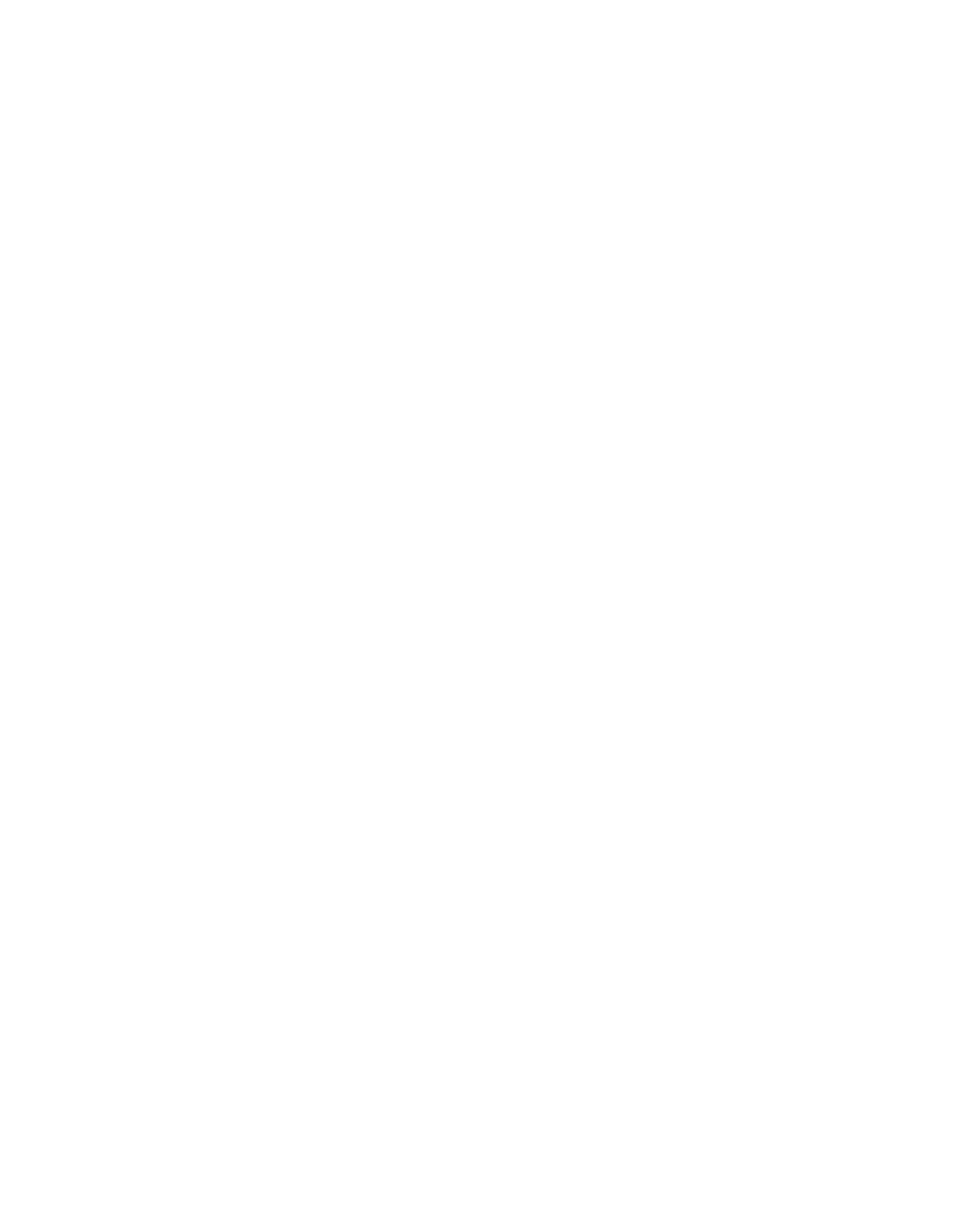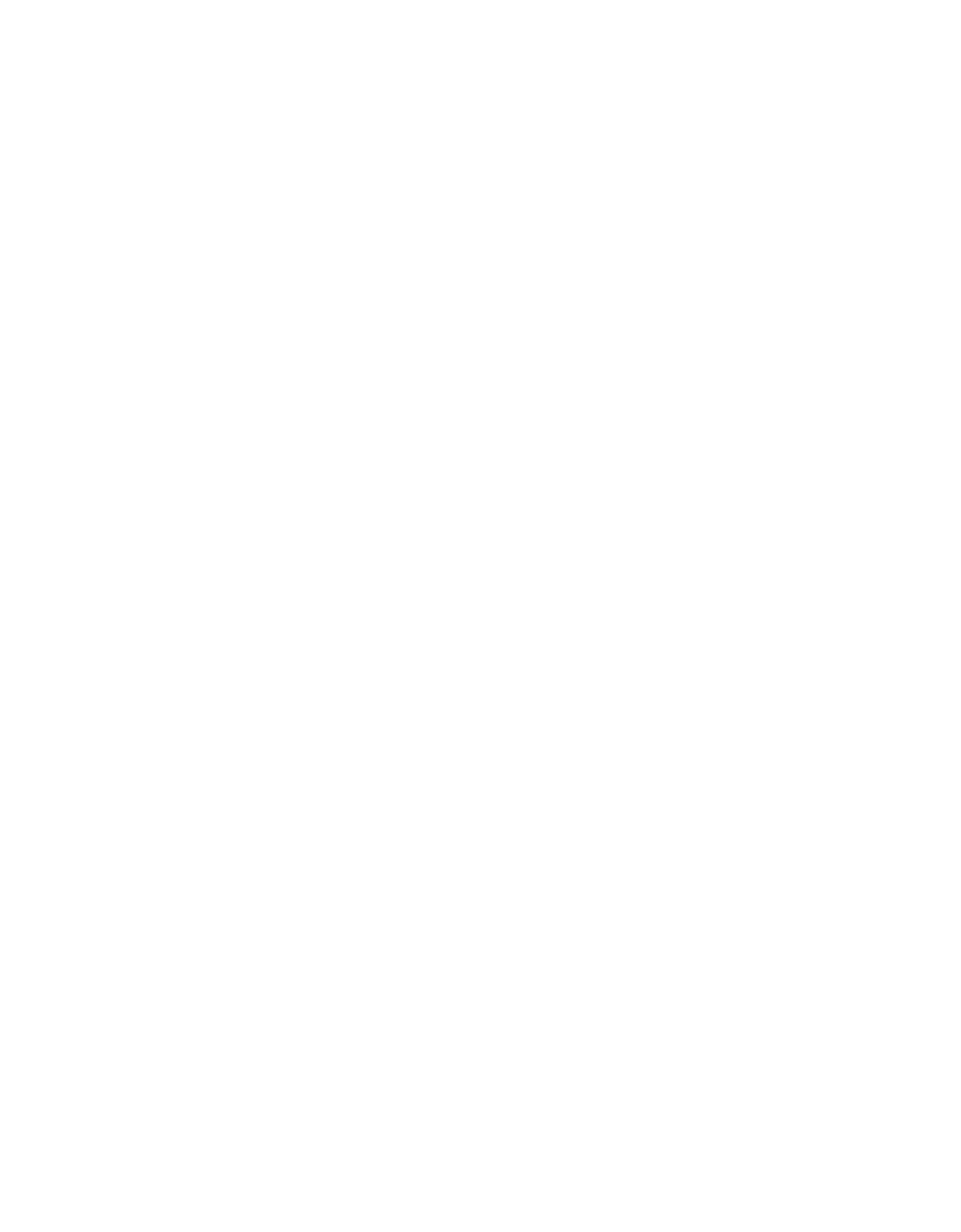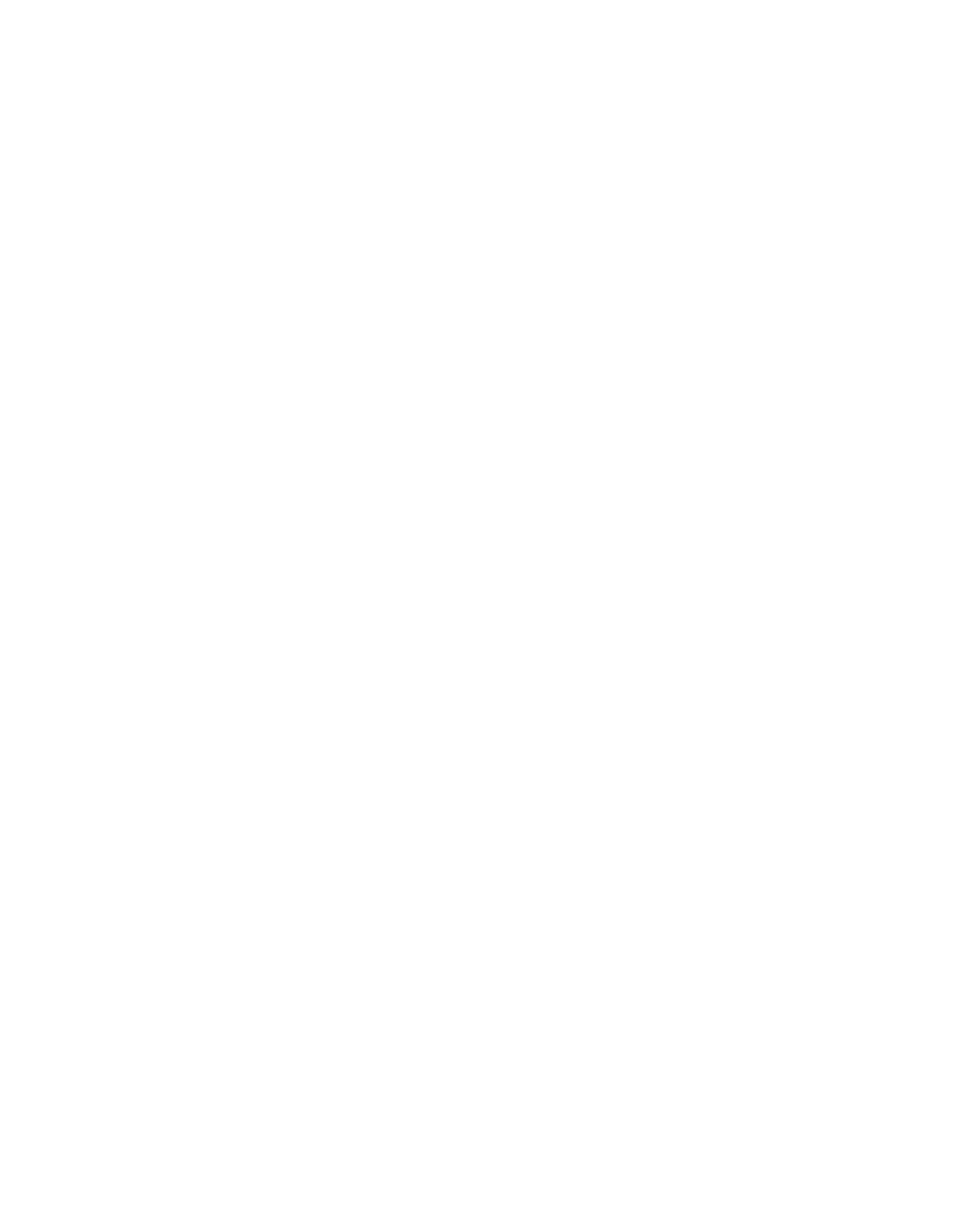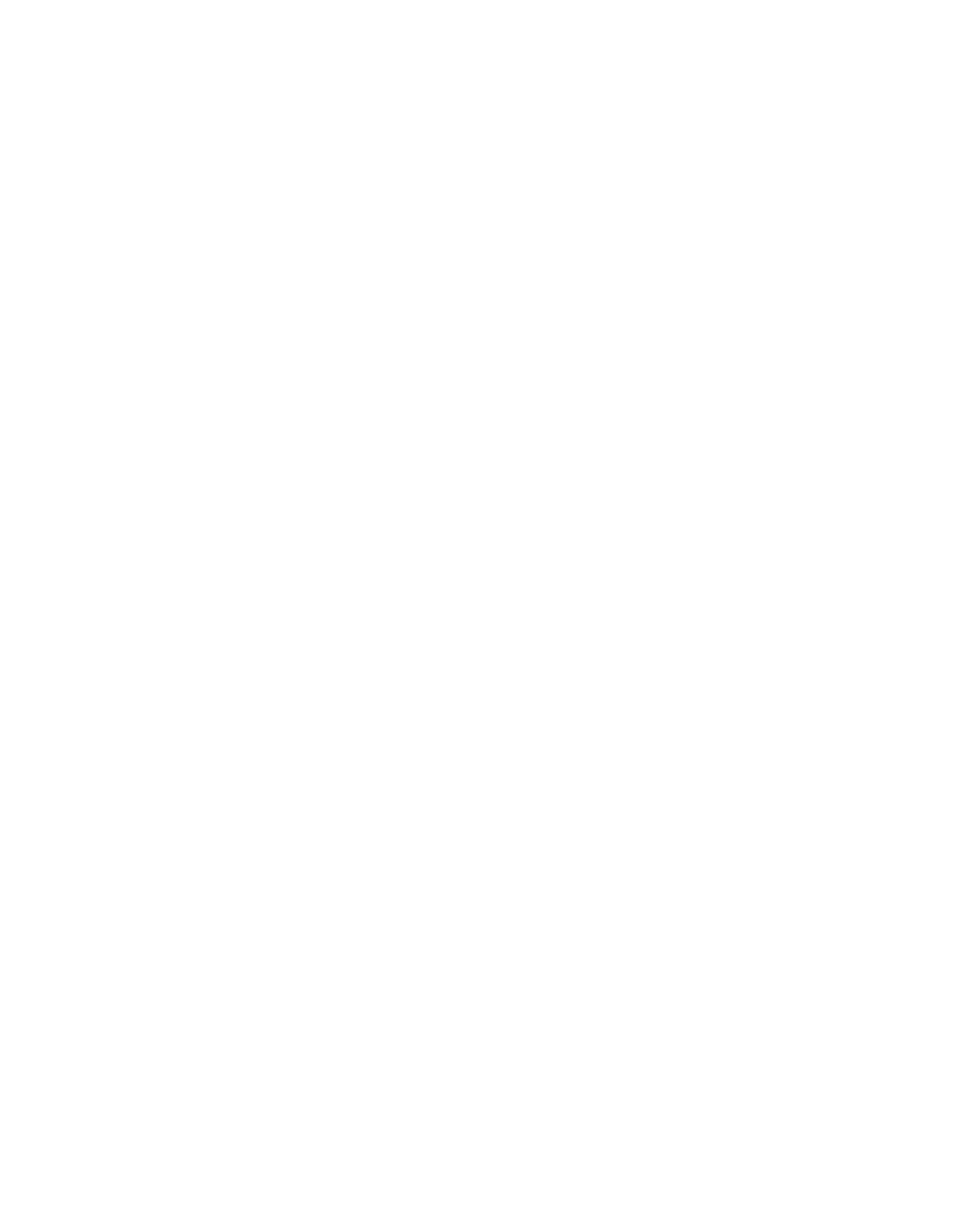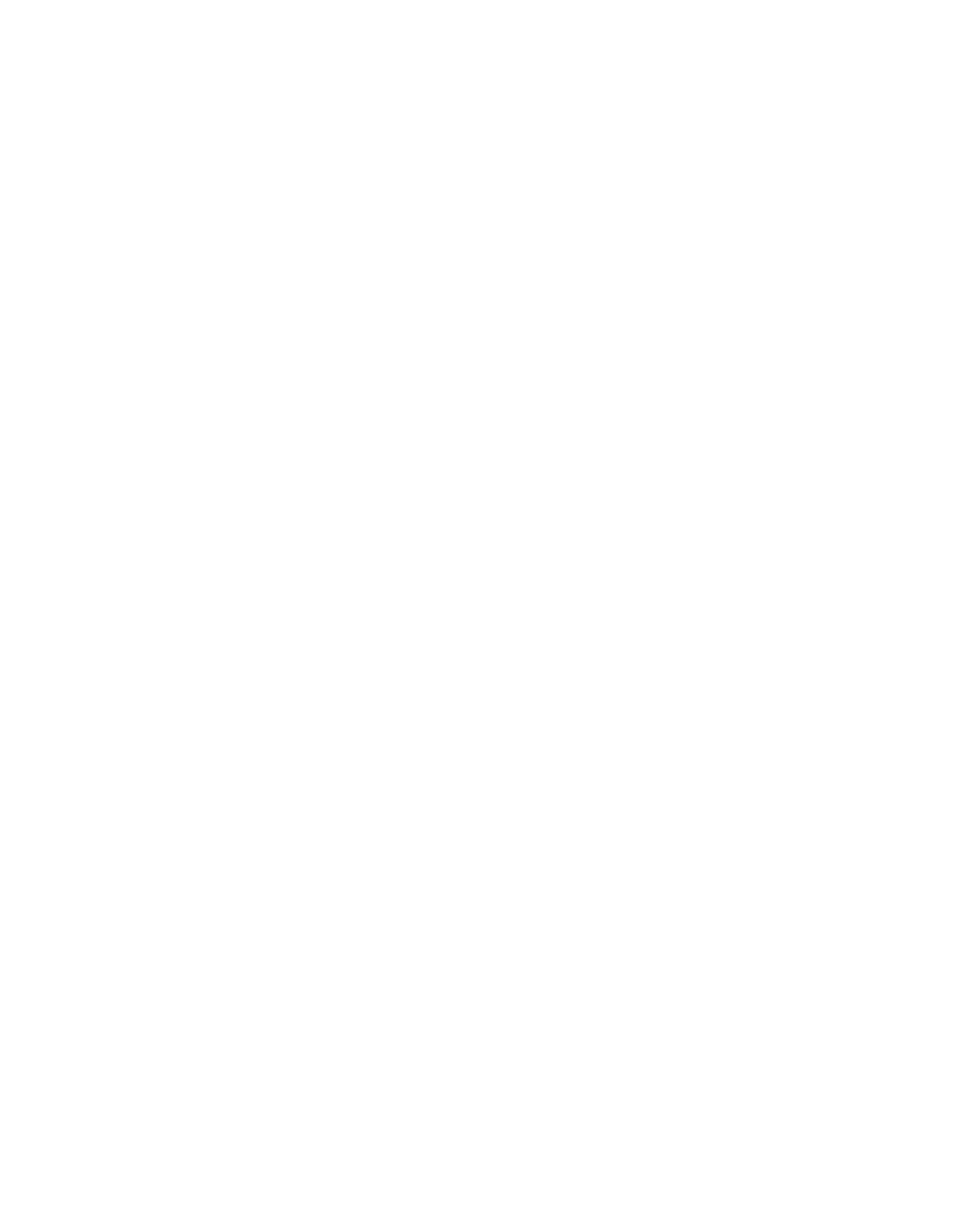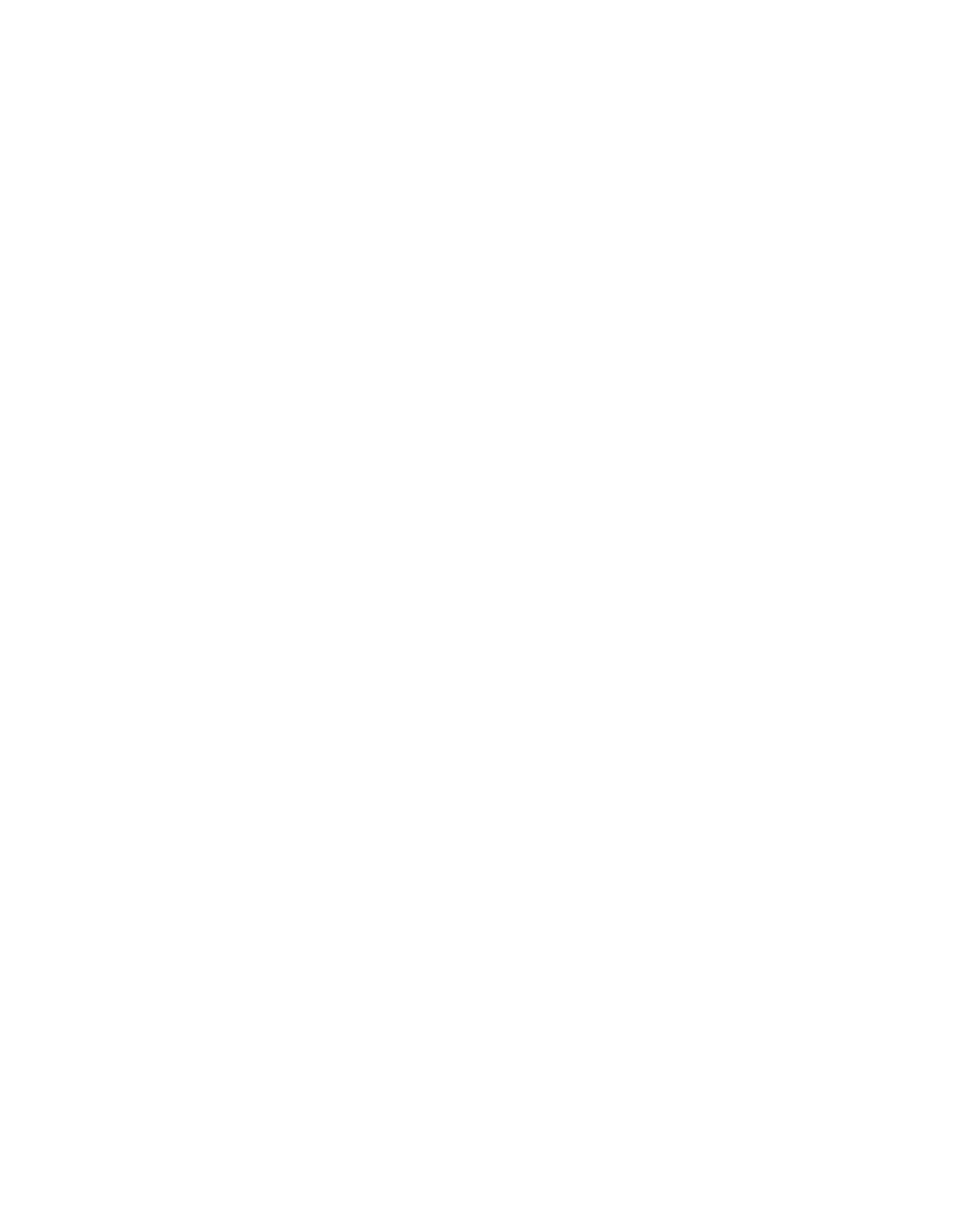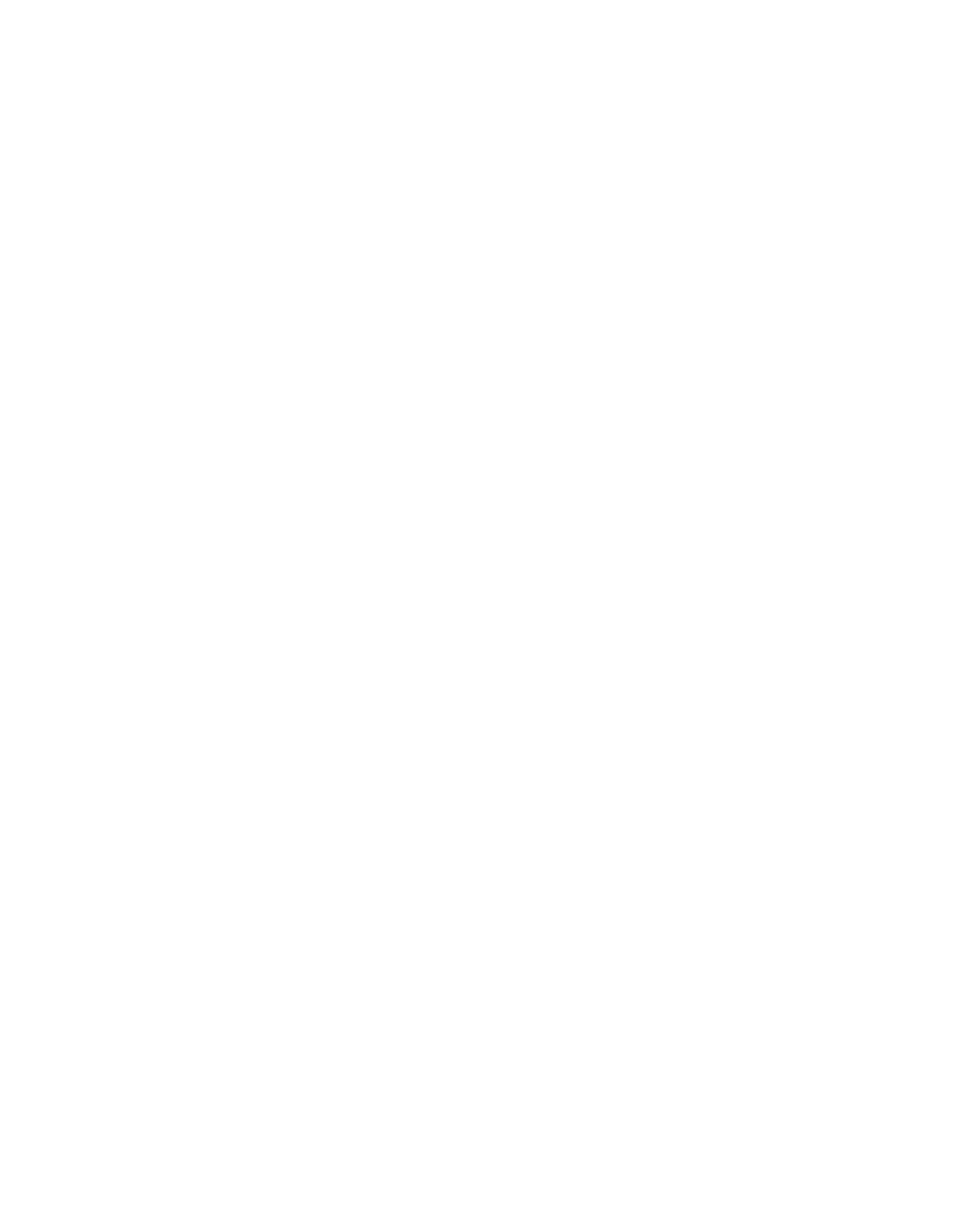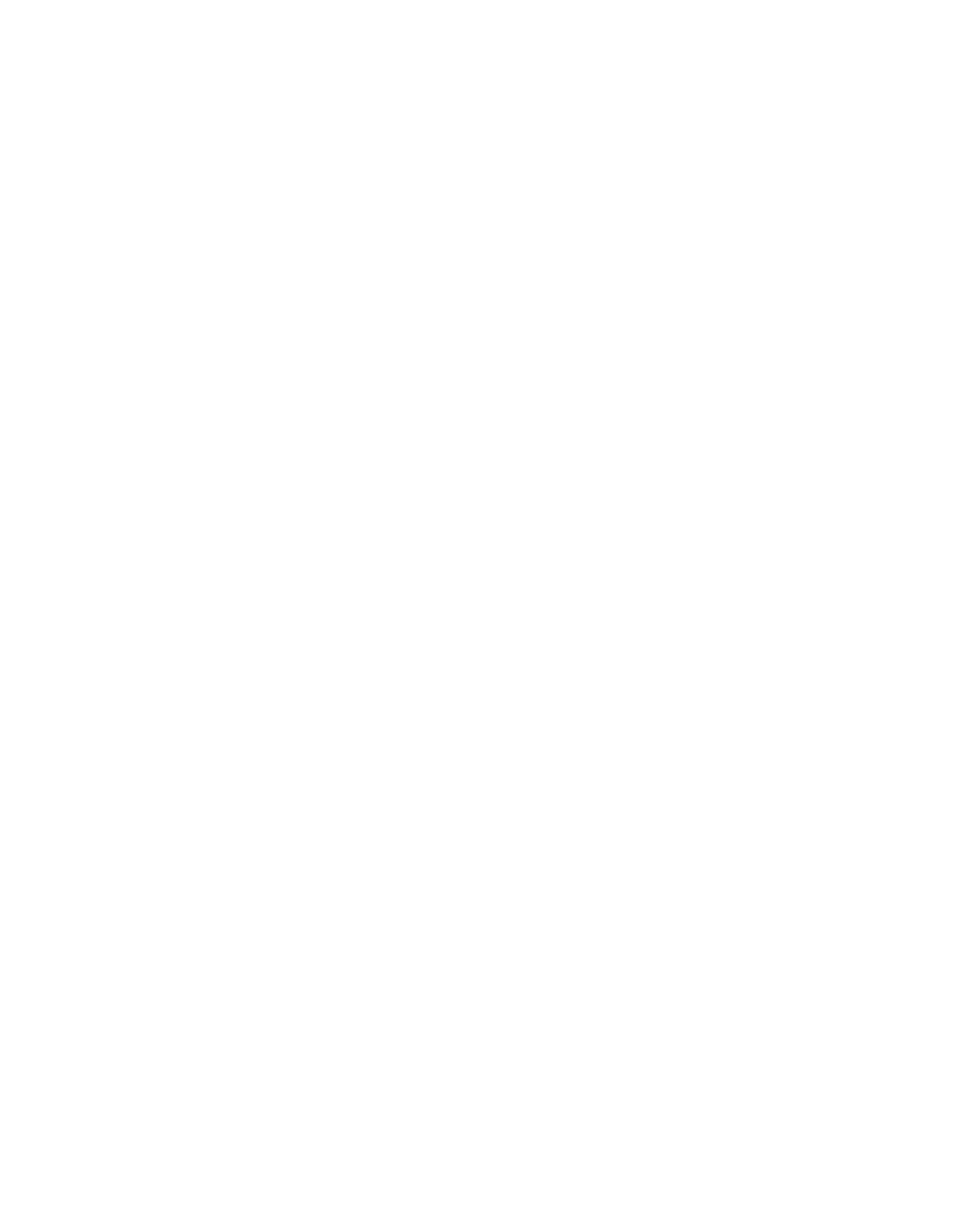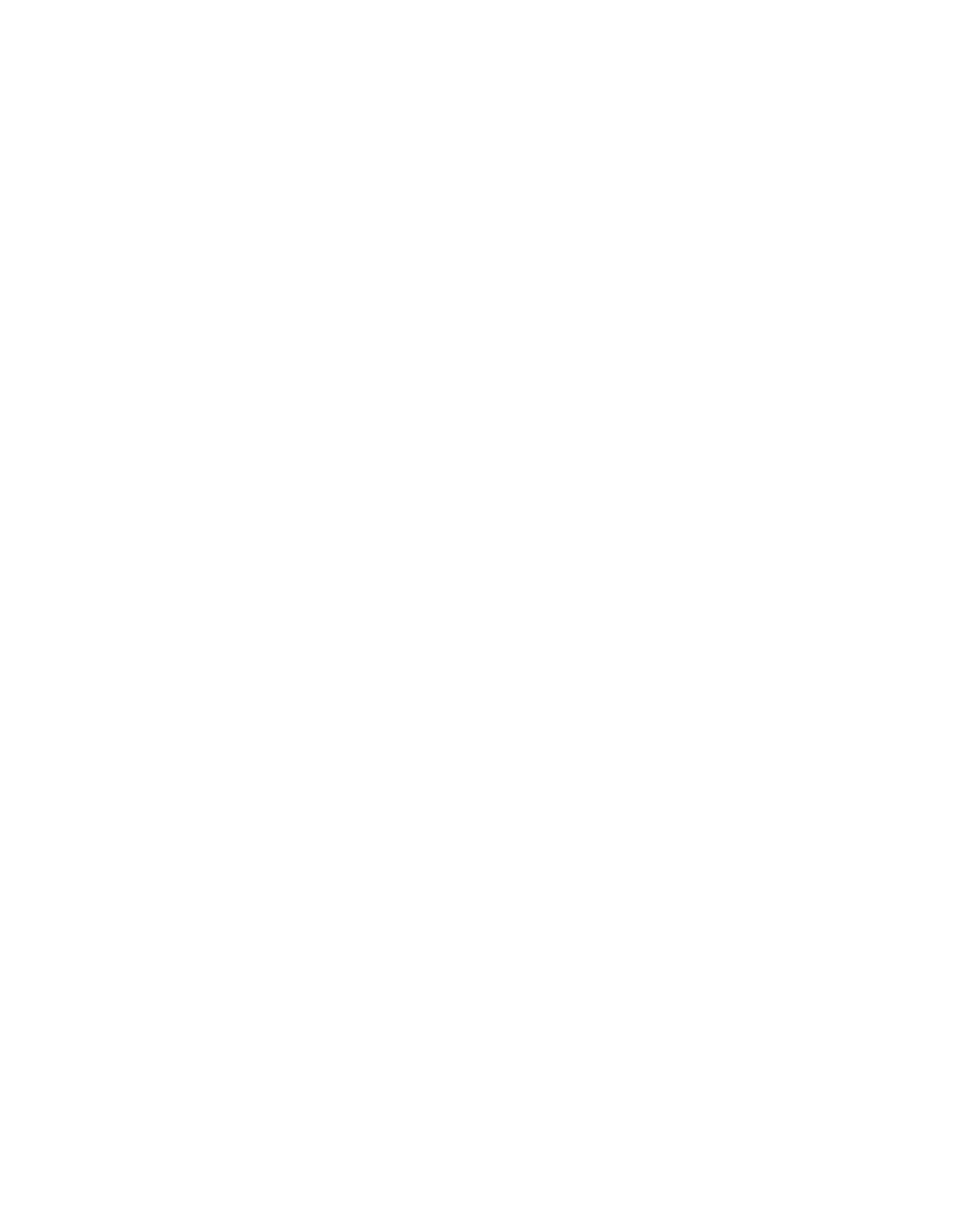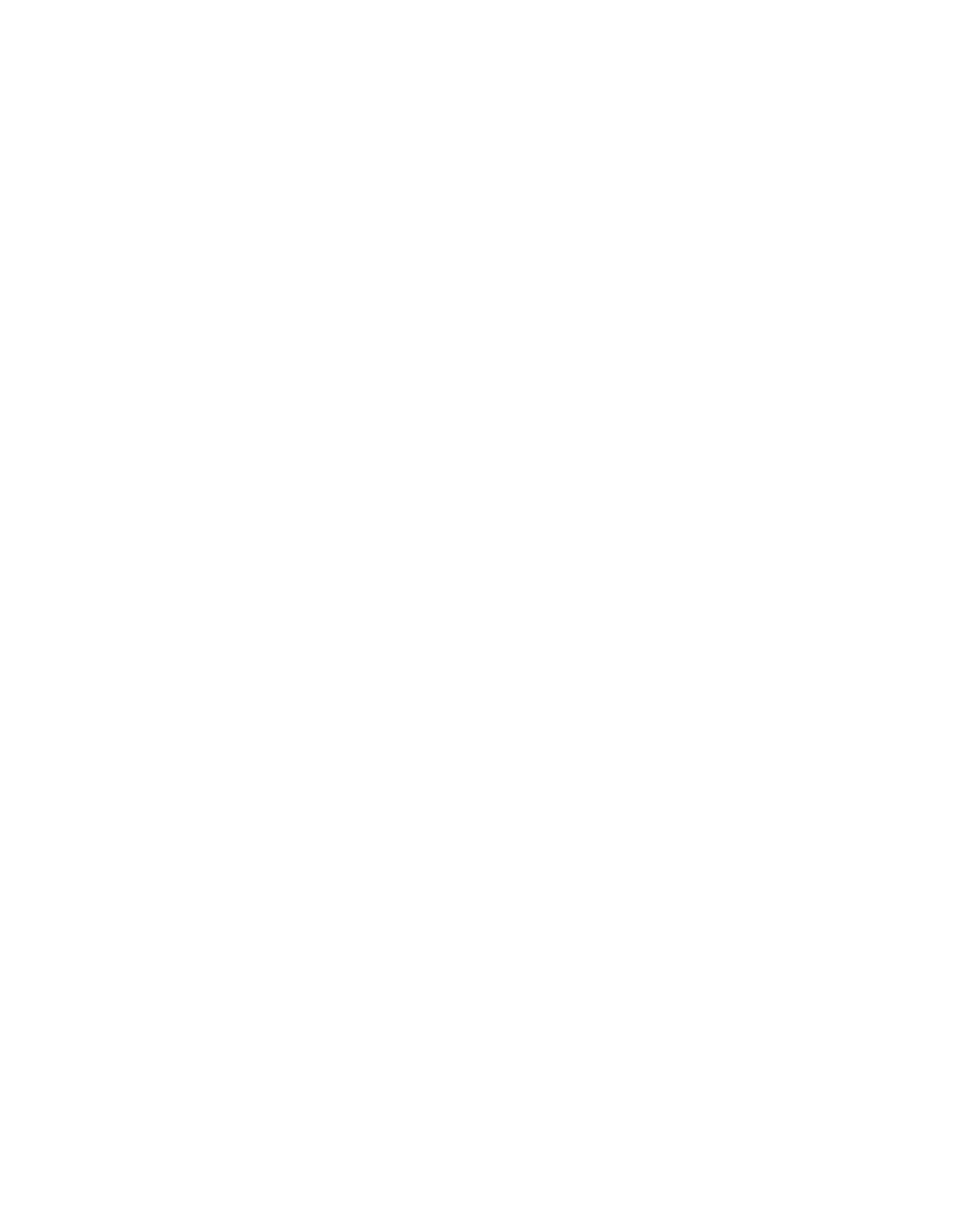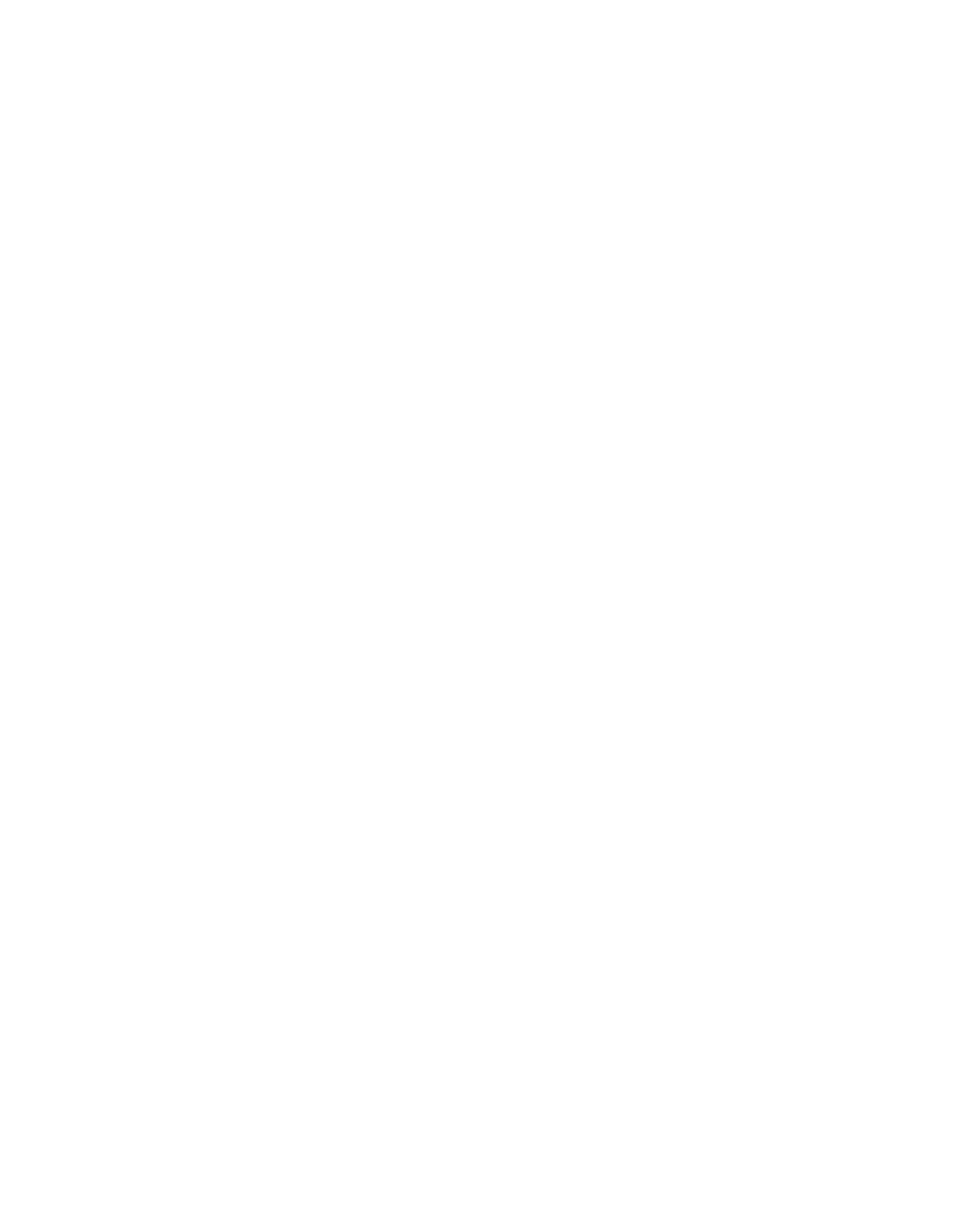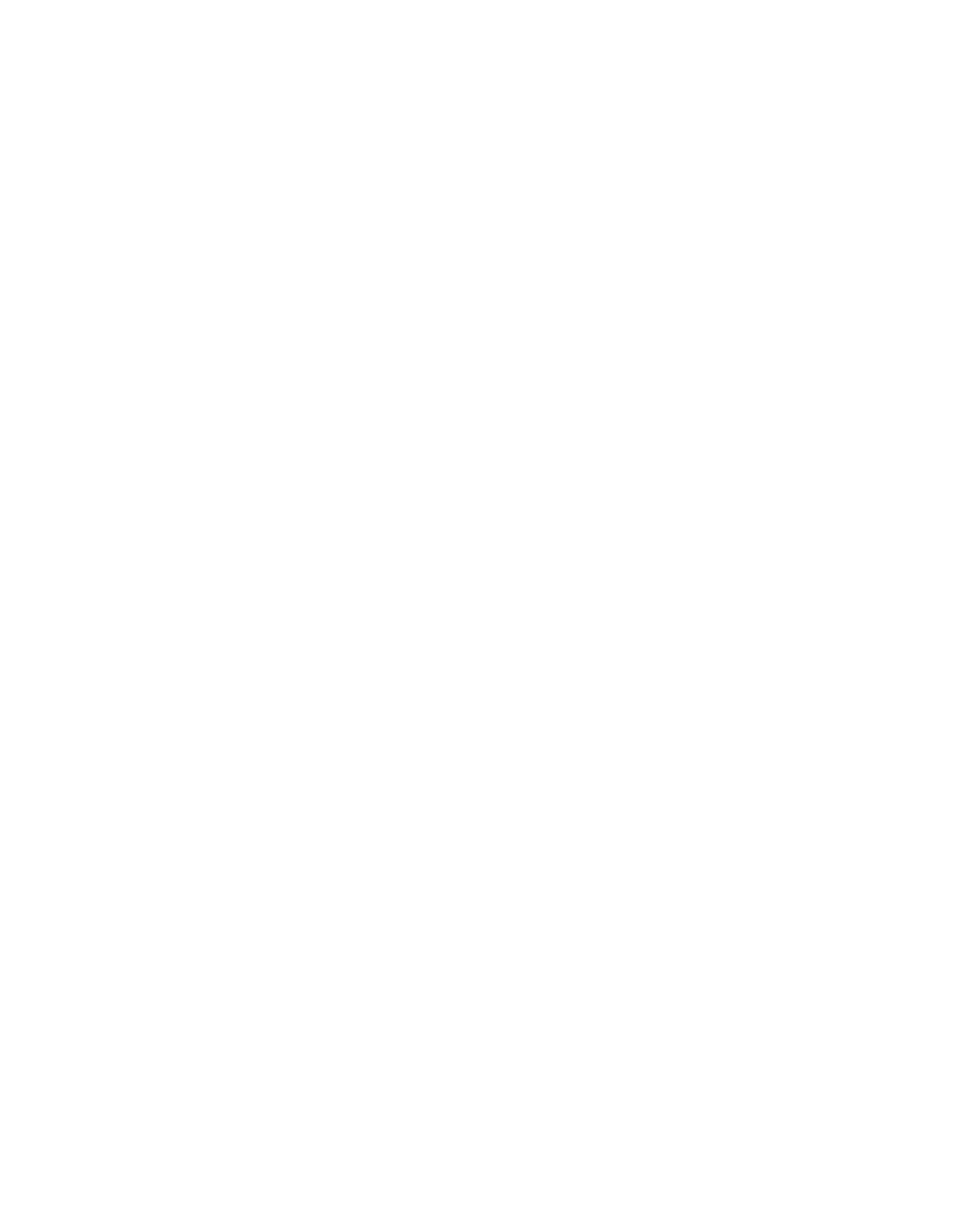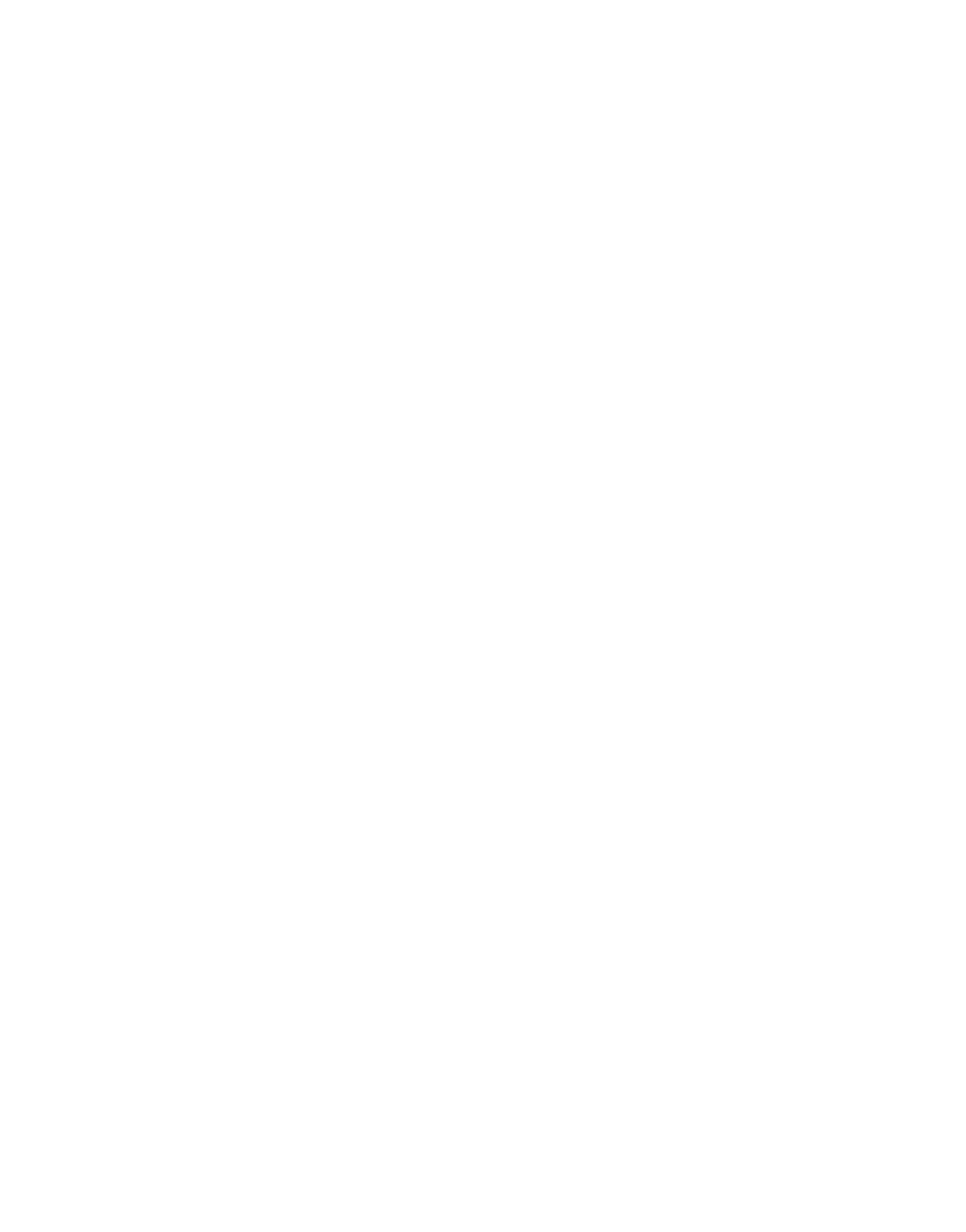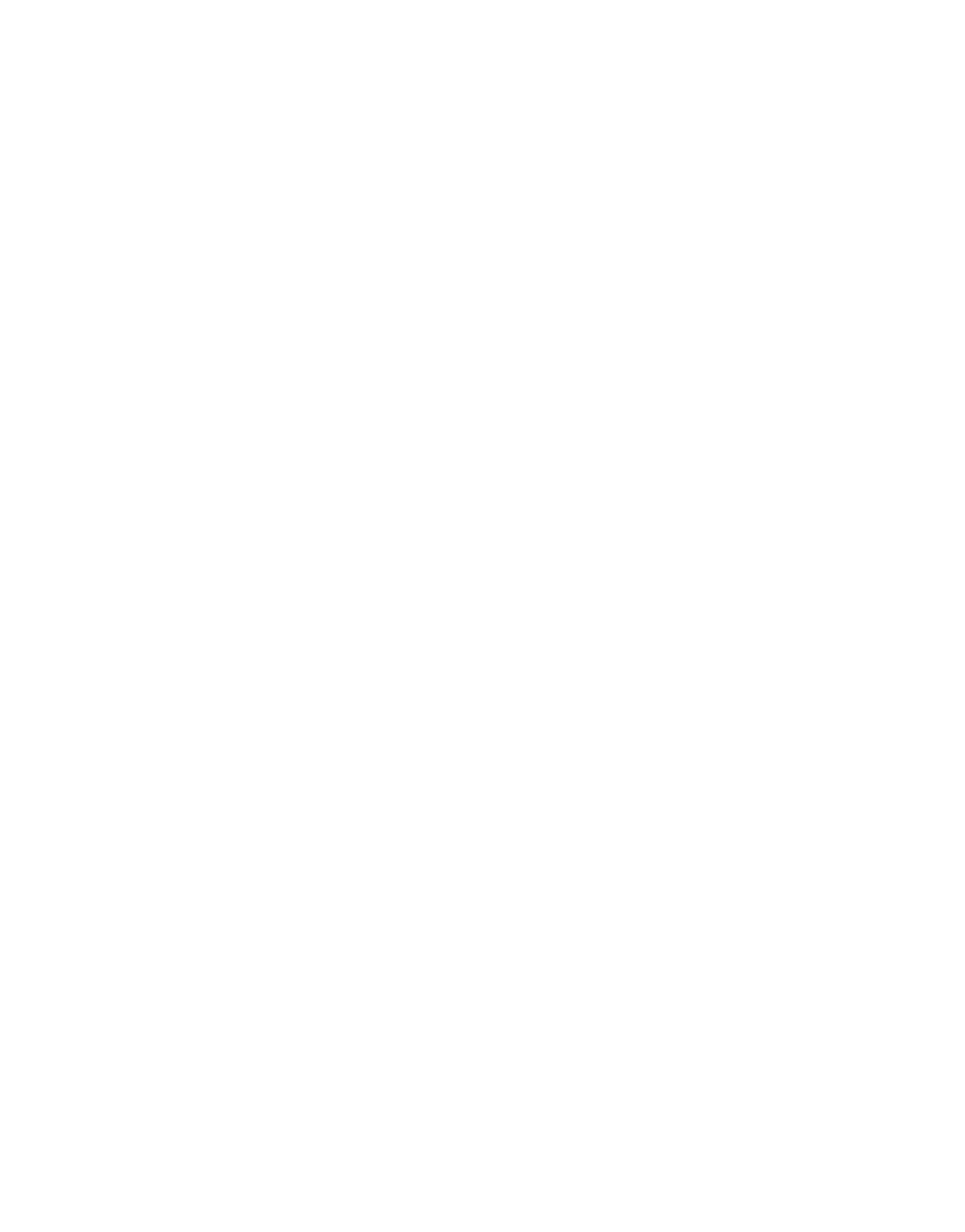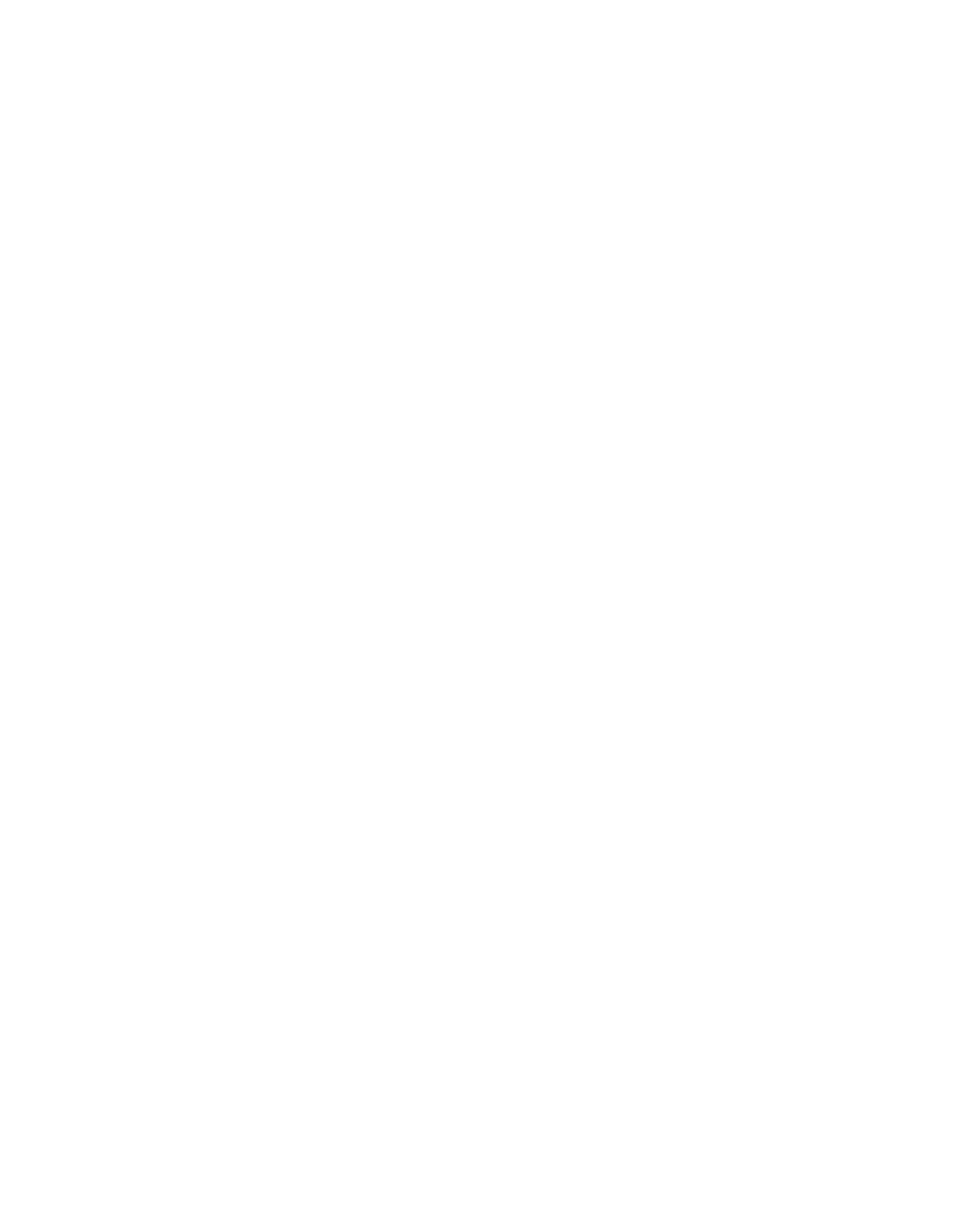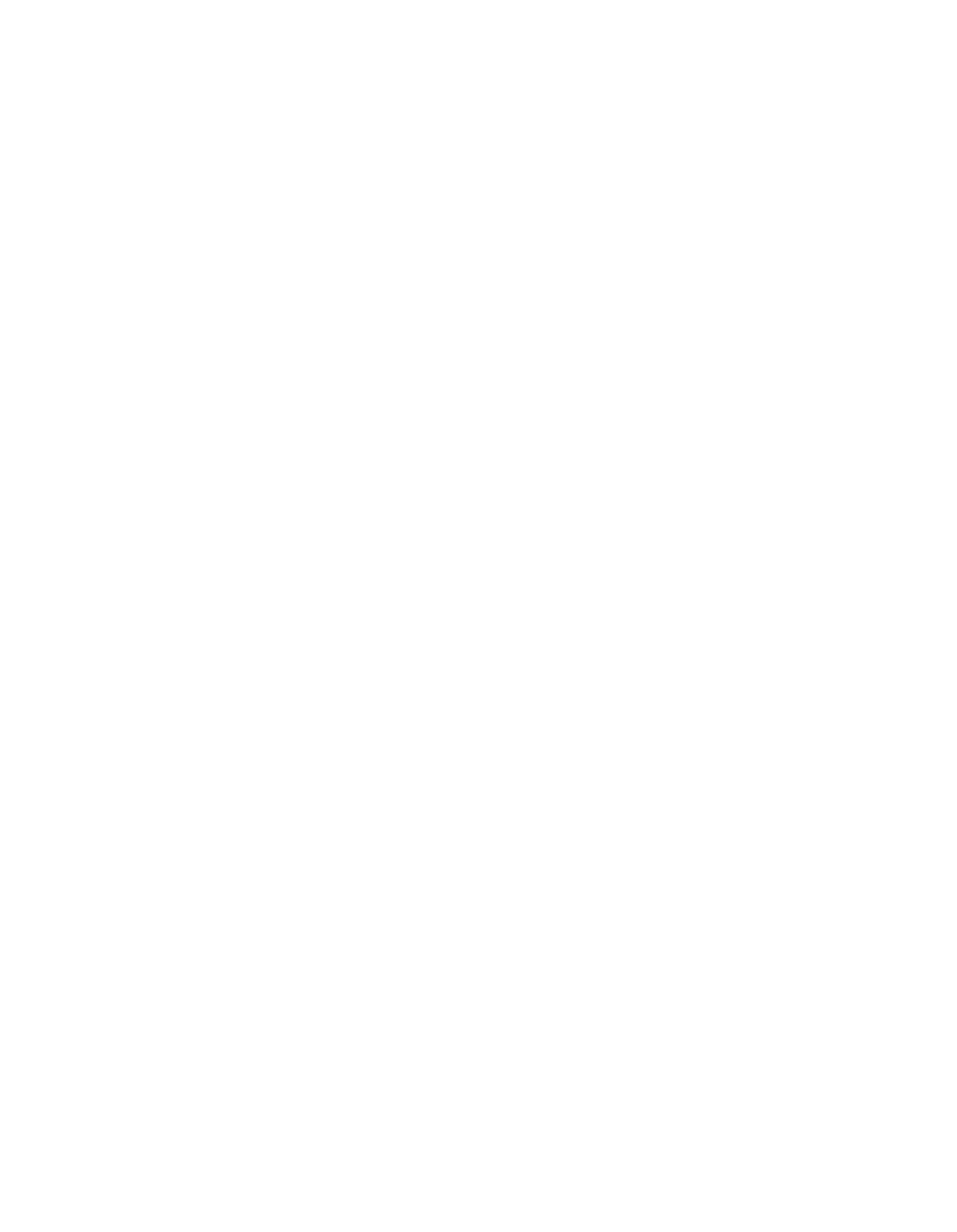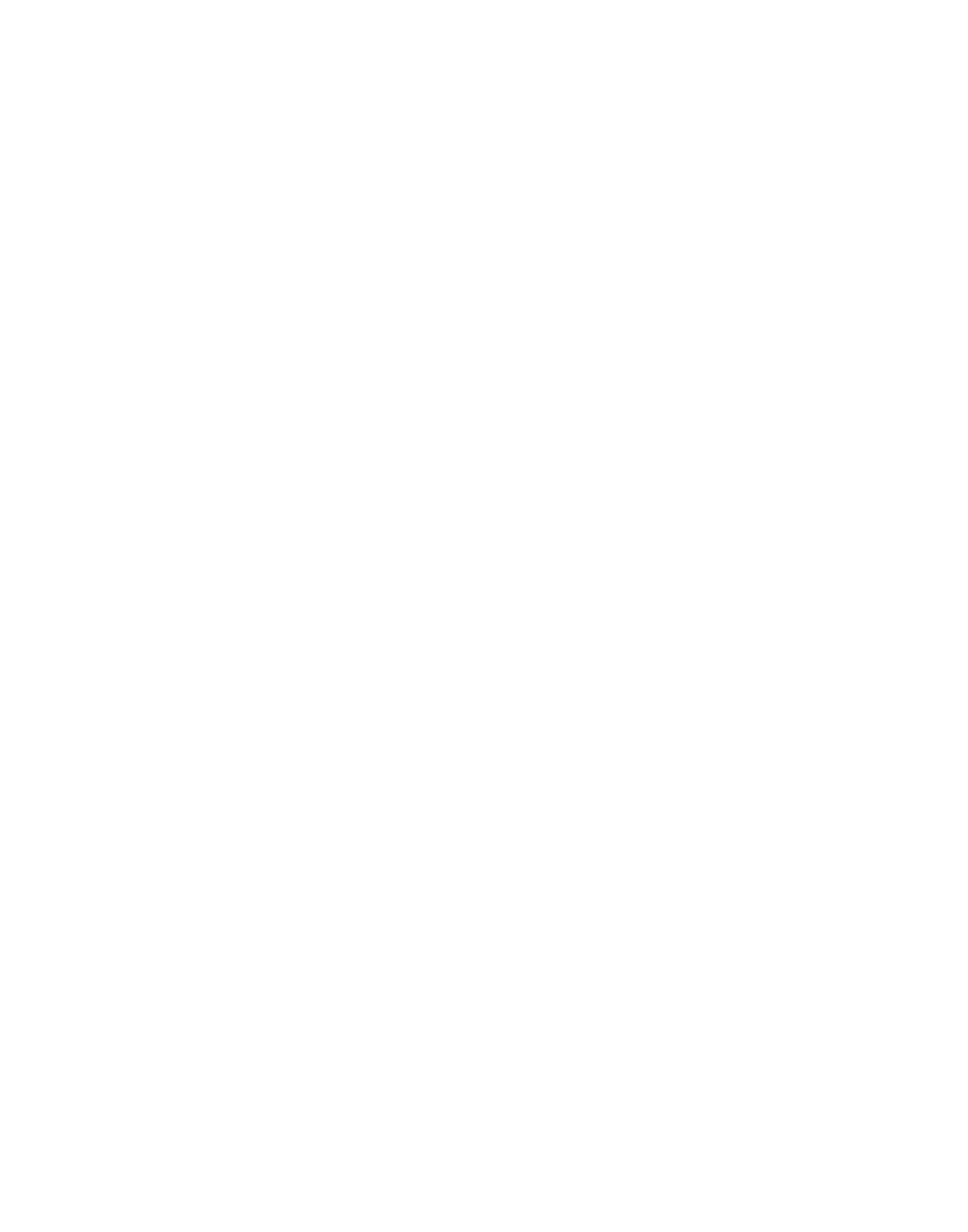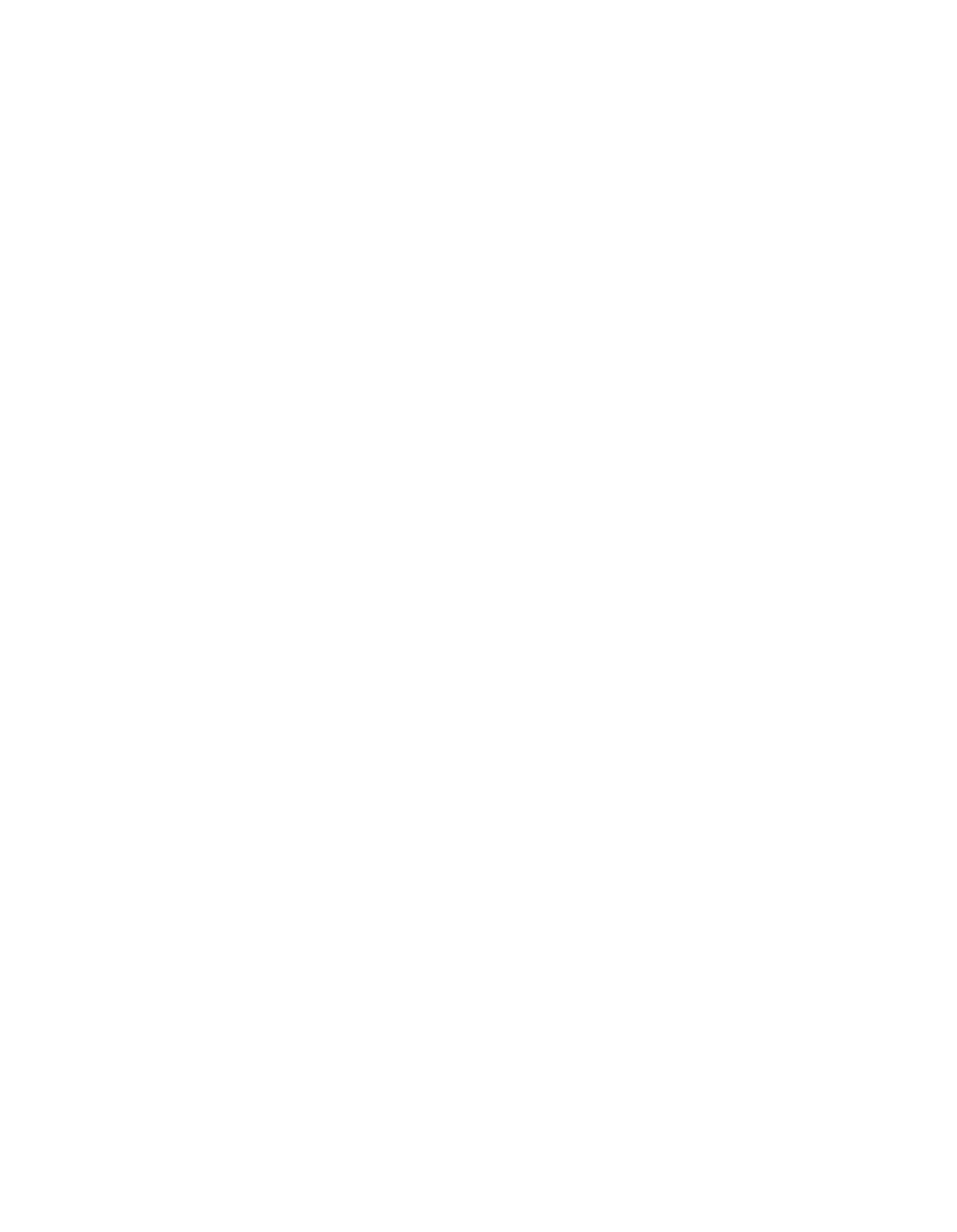ILLINOIS POLLtJTION CONTROL BOARD
June
30,
1988
IN THE MATTER OF:
PARTICULATE EMISSION LIMITATIONS,
)
R82—l
(Docket
B)
RULE 203(g)(l)
AND 202(b) OF
CHAPTER 2
ADOPTED RULE.
FINAL ORDER.
OPINION AND ORDER OF THE BOARD
(by J.
D.
Dumelle):
This Opinion and Order brings
to
a close
a long and
complicated rulemaking proceeding.
Early procedural activities
are set forth
in the Board’s Final Opinion and Order dated July
2,
1986
in R82—l(Docket A):
Particulates.
On March
14,
1986,
the Board adopted an Interim Order
in R82—l separating
that
proceeding
into two dockets: Docket A:
Particulates and Docket
B:
Opacity.
At that time the Board intended
to proceed
to second
notice on the particulate
rules while further considering the
opacity
rules.
However,
the Joint Committee on Administrative
Rules
(JCAR)
refused
to
allow the Board
to proceed
in that
manner.
Therefore,
on May
9,
1986,
the Board adopted
a Fourth
Second Notice order including both the opacity and the
particulate rules.
Second notice was received by JCAR on May 16, 1986,
and was
considered by JCAR on June
23,
1986,
at which
time
it objected
to
each of
the opacity
rules but none
of the particulate
rules.
In
response the Board determined
that it would withdraw the opacity
rules but proceed
to adopt and file the particulate rules.
The
Board adopted
a Resolution and Order
to that effect on July
2,
1986,
and indicated
that
a new first notice order would be
adopted concerning
the opacity
rules
in the near
future under
Docket
B.
On August 14,
1986,
the Board adopted
a Third First
Notice Order.
As more
than one year passed since
the date
of
that first notice,
Section
5.01(d)
of
the Illinois ~dministrative
Procedure Act
(APA) precluded
the rule from being adopted,
or
from being filed with
the Secretary of State.
Therefore,
the
Board sent the proposed rules
to Fourth First Notice on December
17,
1987.
In
the interest of expediency,
the Board adopted
for Fourth
First Notice the same proposal as was adopted
for Third First
Notice
——
but with
a few amendments.
First,
in its comments,
the
Agency suggested certain revisions
to Section 212.124(d),
the
defense provision,
based
on issues that arose at hearing.
The
Agency stated
its position that
the record does
not
support
extending
the Adjusted Opacity Standards Procedures
to “process
sources” and offered revised language.
90—589
—2—
Also,
the Board proposed
a Subpart
B
to
35 Ill.
Adm.
Code
106 entitled
“Air Adjusted Standards Procedures”.
Proposed
Subpart
E
is similar
to
35
Ill.
Adm.
Code
106.
Subpart
D, which
relates to RCRA adjusted standards procedures.
The sections
which comprise Subpart
E are generic
procedural rules which the
Board will reference whenever adjusted standards procedures
are
provided for
in the Board’s
air pollution
regulations.
The Board
believes that
a separate Subpart
for air adjusted standard
procedures
is appropriate
to address
the particular
requirements
associated with the air regulations.
Accordingly,
those
provisions previously
set forth
in Section
212.126 which address
generic procedures are now located
in 35
Ill.
Adm.
Code
106.
Subpart
E.
Fourth First Notice was published
at 12
Ill.
Reg.
1722,
1729,
January 15,
1988.
The first notice comment period
concluded
on March
2,
1988.
The Illinois Environmental
Protection Agency (Agency) submitted the only comment during the
Fourth First Notice on February 26,
1988.
On March
21,
1988,
the
Department
of Commerce and Community Affairs filed
its Impact
Analysis
stating
that
the proposed amendments
will have no
economic effect on small businesses.
The Administrative Code
Division of the Secretary of State’s Office
filed comments on
February 11,
1988.
Those comments have been incorporated into
the Second Notice Order.
Pre—Fourth
First Notice Comments
In the Fourth First Notice Order
the Board stated:
“The
Board
believes
that
the
revisions
may
affect
the
continued
applicability
of
the
previously filed
cormiients and requests further
comment
on
these
issues.
For
the
sake
of
efficiency,
the Board notes that comments need
not
be
duplicated.
Previous
comments,
if
still
applicable,
may
be
incorporated
by
reference.”
As noted above, only the Agency filed comments on the Fourth
First Notice Order.
Despite
the Board’s clear request
for
additional comment, none
of the previous comrnenters opted
to
address
the Fourth First Notice proposal.
As
the Board cannot
and will not second—guess
those commenters,
the Board
can only
assume that the Fourth First Notice proposal does not meet with
disapproval
other than that noted
by the Agency.
Third First Notice History
On August
14,
1986 the Board issued
the Third First Notice
Order
in this Docket (R82—l(B)).
The Board noted
that several
issues remained
from the Fourth Second Notice Order
and requested
‘jo—
591)
—3—
comment
on
them.
On October
2, 1986,
the Administrative
Code
Division
of the Secretary of States Office
filed comments.
On
November
20,
1986,
the Agency submitted
a revised opacity
proposal.
The final hearing was held on November
24, 1986.
Seven comments were filed between May,
1986 and February,
1987.
In
the~
Third First Notice Order,
the Board asked whether
“Reasonable Time” in Section 212.124(c)
(now renumbered
to
subsection
(d))
should be defined.
At hearing on November
24,
1986,
the Agency suggested
the language
“a reasonable
time not
to
exceed
60 days.”
This was the language proposed at Fourth First
Notice.
In reviewing previous comments,
the Board determined
that this language could be clarified further.
The Board added
“after written notification from the Agency
of
a violation”
after
“60 days.”
The Board
takes
this action consistent with
the
expressed intentions
of
the Agency.
(Tr.
16, November 24,
1986).
In Third First Notice,
the Board asked whether
“similar
operating conditions” should be defined.
At hearing
on November
24,
1986,
the Agency agreed that “similar
operating conditions”
is vague.
Further,
the Agency noted that there might be
similar
operating conditions
that would decrease mass emissions but not
opacity.
This,
the Agency noted, could
be viewed
as
a relaxation
of the State Implementation
Plan
(SIP) without
a demonstration
that the National Ambient Air Quality Standards would not be
jeopardized.
The Agency proposed,
therefore,
to amend “similar”
to “same.”
The Board did so
at Fourth First Notice,
and received
no comment on
this action.
As the Board believes that the “same
operating conditions”
at
the time of the violation
is more
definite than “similar operating conditions,”
the Board will
retain the language as proposed
at Fourth First Notice.
At Third First Notice,
the Board asked whether levels of
justification must be established
under
then Section 212.126(1)
regarding how the factors
of Section 27(a)
of
the Environmental
Protection Act (Act) will be considered
in deciding whether
to
adopt an
adjusted standard.
JCAR had indicated that such levels
of
justification were necessary.
The Board notes
that this
subsection
no longer exists
in Part 212,
rather
a similar section
was proposed
in the Part 106 procedures
for an adjusted
standard.
Section 106.507, requires the Board
to adopt an
opinion and order consistent with Section
27(a)
of
the Act.
As
the text of this Section was based
on Section 106.416, already
adopted and already past JCAR review,
the Board does not
anticipate any further problem with the language proposed
at
Fourth First Notice.
As previously noted,
after
Third First Notice, several
comments were submitted on the proposed rules.
As
a result of
changes made at hearing
and thereafter,
the Board believes that
many concerns raised
in the comments have been resolved.
However, one of the commenters,
the Illinois Power Company,
took
the position
that
90-59 1
—4—
“there
is
no
statutory
mandate
that
the Board
adopt
opacity
as
an
independently enforceable
air emission
standard.
Furthermore,
there
is
no federal
requirement under
the Clean Air Act
that
the
Illinois
State
Implementation
Plan
(SiP)
contain
an
independently
enforceable
opacity
standard.
In
any
event,
the
Record
does
not support
such
a
standard.”
(P.C.
No.
42, filed February
19,
1987).
The Board does not agree.
By Interim Order dated March
14,
1986,
the Board noted
that
a
letter was filed by Mr. Steve
Rothblatt of United States Environmental Protection Agency
(USEPA), indicating USEPA’s position that the rule
as then
proposed were unapprovable.
The Board stated that
“these communications
from USEPA place
a cloud
over the opacity rules:
the state
is required
to
comply
with
the
Clean
Air
Act
and
regulations
adopted
thereunder,
and
USEPA’s
interpretation
of
its own
rules must be given
some deference.”
Further,
the Board set another hearing
and requested
testimony
regarding
the
“legal
requirements
of
the
state
implementation
plan
regarding
visual
emissions,
what
type
or
types
of
rules
would
or
should
be
federally
approvable,
the
adequacy
of
the
present
record
to support
the
adoption of such rules
...
.“
(Interim Order,
March
14,
1986,
p.
2).
Hearing was held on April
28,
1986,
at which William L. MacDowell
testified on behalf
of USEPA.
It was Mt. MacDowell’s testimony
that Federal regulations,
40 CFR 51.19(c)
(now codified
at 40 CFR
51.212(b))
require enforceable visible emissions limitations
in
order
to ensure that particulate control equipment
is properly
operated and maintained on a continuing
basis.
Mr. MacDowell
offered much testimony to support
the notion that opacity
rules
are federally required.
Further,
in its comments on
the Fourth
First Notice,
(P.C.
No.
44),
the Agency submitted
a letter dated
November
6,
1987,
from
Mr.
Michael
Hayes,
Manager
of the the
Division
of Air Pollution Control,
to Jacob Dumelle, Chairman of
the
Pollution
Control
Board.
The
letter
notes
that
the
previous
First
Notice
in
the
rulemaking,
R82—l(B),
expired
on
September
5,
1987
and
urges
the
Board
to promptly promulgate opacity standards
because
it
believes
that
such
standards
remain
necessary.
To
support
this
belief,
the
Agency
also
submitted
an
Agency
memorandum
from
Dan
D’Auben
to
Susan
Schroeder
on
the
necessity
issue.
The
memo
states:
90—592
—5—
“The
State
of
Illinois
will
be
submitting
three
types
of
PM10
SIP5.
The
first,
for
Group
I
areas,
may
include
new
process
and
fugitive
emission
rules
for
sources
in
SE.
Chicago,
S.W.
Cook
County,
Oglesby,
and
Granite
City.
These
areas,
because
of
previous
TSP
monitoring,
PM10
monitoring,
or
previous
studies
are
presumed
to
not
be
in
compliance
with
PM10
NAAQS.
The second
type
of
PM10
SIP
(Group
II)
is
for
areas
the
compliance
with
the
NAAQS
is
uncertain.
The
last
type of PM10 SIP (Group
III)
is for areas
that
it
is
assumed
that
the
TSP
SIP
is
adequate
to protect the PM10 NAAQS.
This type
of
SIP would
cover
the majority
of
the
State
of
Illinois.
A
major
SIP
requirement
for
Group
II
and
III
areas
is
that
the
TSP
SIP
must
be
viable
and
enforceable.
This
is
required
because
it
is
assumed
that
the
TSP
emission
regulations
are
adequate
to
protect
the
PM10
NAAQS.
If
an
opacity
rule
is
not
promulgated
for
TSP
(R82—1)
we
feel
that
the
USEPA will
hold
that portions
of
our TSP SIP
are
unenforceable
and
therefore
the
PM10
SIP
is
not viable.”
(Agency’s Fourth First Notice
Comments,
P.C.
No.
44,
filed
February
26,
1988,
Attachment
2).
The
Board
believes
that
the
Record
is
sufficient
to
support
the
adoption
of
these
opacity
rules.
Fourth
First
Notice Comments and Revisions
The
Agency
commented
that
in
proposed
Section
2l2.124(d)(1)
certain
words
were
“mistakenly
deleted
from
the
Fourth
First
Notice”
Order.
The
Board can only note that
the language
proposed
to
Section
2l2.124(d)(l)
at
Fourth
First Notice was
taken
verbatim
from
the
Final Agency Comments filed February 11,
1987,
at
page
5.
The
Board
accepts
the
Agency’s
suggestion
and
has
amended
“Section
212.123”
to
become
“Sections
212.122
and
212.123.”
The
Agency
commented
that
Section
2l2.124(d)(2)
contains
a
reference
to
Section
212.110.
The
Agency
noted
that
it
has
proposed
to change this particular provision
in Board rulemaking
R79—14
to the procedures
of 35
Ill.
Adrn. Code
230, Appendix A (40
CFR 60, Method
5).
Because R79—14 has not yet been sent to First
Notice,
this proceeding will most
likely result
in finalized
regulations first.
Therefore,
the Board will
include the
amendment
in this proceeding.
However, because
the Environmental
Protection Act
(Act)
no longer authorizes
the Board
to
90—593
—6—
peremptorily amend
35
Ill. Adm.
Code 230 and
231,
the Board will
Cite directly
to the Code
of Federal Regulations
for
incorporation of procedures therein.
As a result,
“Section
212.110”
is deleted and the following
language
is added
to
Sections 212.124(d)(2)(A)
and
(B):
“Method
5,
40
CFR 60,
incorporated
by reference
in Section 212.113.”
The Agency suggested the following modifications
of Section
2l2.126(c)
and
(e)
for clarity:
“Section
212.126(c):
Any
request
for
the
determination
of
the
average
opacity
of
emissions shall
be
made
in writing,
including
the
time
and
place
of
the
performance
test,
all
test
specifications
and
procedures,
and
submitted
to
the Agency
at
least
thirty days
before the proposed
test date.”
“Section
212.126(e):
The
owner
or
operator
shall
allow
Agency
personnel
to
be
present
during
the performance test.”
The Board accepts
the Section 212.126(e)
suggestion.
However,
the Board believes that Section 212.126(c)
requires
further grammatical clarification.
The Board
thus amends Section
212.126(c)
as follows:
“Section
212.126(c):
Any
request
for
the
determination
of
the
average
opacity
of
emissions
shall
be
in
writing,
shall
include
the time and place
of the performance
test and
all
test
specifications
and
procedures,
and
shall
be
submitted
to
the
Agency
at
least
thirty days before the proposed test date.”
The Agency also noted
its concerns regarding
the Board’s
amendment
of
35 Ill.
Adm.
Code 106.Subpart
B:
Air Adjusted
Standard Procedures.
The Agency states that although the general
idea of
a standardized procedure has merit,
there are currently
at least two regulations other
than the opacity rules that
contain important specialized procedures for obtaining
an
adjusted air standard.
The Agency argues that these and all
other existing specialized procedures should
take precedence over
a general
air adjusted procedure.
The Board does not dispute
the
Agency’s arguments.
However,
the Board does believe that the
general procedures
for obtaining
an adjusted standard should be
located among
the Board’s procedural
rules.
Therefore,
the Board
will retain
the
35
Iii.. Mm.
Code 106 amendments, but will make
them applicable at this time only
to the
35
Ill.
Adm. Code
212.
Subpart B rules.
The Board
is persuaded
that
there is
insufficient information
in the
record
to
justify utilization of
these rules
for other existing specialized procedures.
As future
90—59 4
—7—
adjusted
standards provisions
are adopted,
these general
procedures can be referred
to and utilized.
In addition
to providing comments regarding Part 106
procedures
in general,
the Agency commented on certain specific
aspects of the Part 106 proposal.
First,
the Agency opposes
a
certain part
of Section 106.503(b).
The Agency states that
it
has “limited access
to source
information and limited procedures
to enforce information gathering,”
and that “this section should
not be construed as requiring the Agency to assist
in the proof
of the petition,
as the Agency has the right
to prioritize
its
use of resources
to meet its statutory obligations under
the
Environmental Protection Act.”
The Board
notes
that Section
106.503(a)
clearly and explicitly states
“the Agency may,
in
its
discretion, act
as
a co—petitioner.”
Thus,
the Agency will not
be required
to assist
in the proof of
the petition.
The Agency further argues that
“to require written
notification of
the Agency’s position regarding whether
or not
it
will
be
a co—petitioner and
its underlying reasons
is unnecessary
and places
an added burden on the Agency.”
In support
of its
argument,
the Agency states that
it and potential petitioners are
“well aware”
of
the identity of each other
and that “the Agency’s
position
is
clear
from
its
pleadings
and
hearing
participation.”
The Board notes
that this requirement
is not new
to
adjusted
standard
procedures.
Similar
requirements
can
be
found
in
the
RCRA
adjusted
standard
procedures
(35
Ill.
Adm.
Code
106.412)
and
in
the
CSO
exception
proceeding
(35
Ill.
Adrn.
Code
306.352(b)).
Because
this decision
is discretionary (proposed
Section 106.503(a))
and not appealable
to the Board
(proposed
Section 106.503(c)),
and because
the Agency has expressed
opposition
to the requirement in this context,
the Board
has
determined
that
a compromise
is
in order.
The Board will retain
the written notification requirement
(1)
to maintain consistency
with the above—noted regulations and
(2)
to ensure that the
applicant receives
a prompt response.
However, the Board
believes
that
it
is
perfectly
appropriate
for
the
Agency
to
decline
to
co—petition
in
the
event
that the Agency
is faced with
a
lack
of
resources
with
which
to
investigate
and
co—petition.
Therefore,
a simple statement
to that effect
is
the minimum that
would
be
required
by
Section
106.503(b).
The Agency states that in Section l06.504(b)(2)
the written
statement should
be signed by only the petitioner
and not the
Agency, even
if the Agency
is
a co—petitioner
or approves
of the
proposed standard.
The Agency argues
that
it cannot,
from
its
own independent knowledge,
verify all
of the various elements
that this written
statement contemplates.
The Board appreciates
the
Agency’s
concerns
and
has
revised
Section
106.504(b)(2)
to
require
only
the
petitioner’s
signature.
90—595
—8—
As regards
the Section 106.505 time for response to the
filing of
a petition,
the Agency argued that twenty—one
(21)
days
is too short.
The Agency believes
that
a minimum of
forty—five
(45)
days
is necessary
for
an effective evaluation.
In the
absence of any evidence
to the contrary,
the Board defers to
the
Agency’s
knowledge
of
its internal processes,
and accepts the
forty—five
.i~45) day
response
period.
In
addition,
the
Board
has
made
certain
clarifications
to
the
text
of
the
proposed
rules
on
its
own.
These changes
are
in
no
way
intended
to affect
the substance
of
the proposed rules,
but
rather
are
intended
to
make
the
language of
the
rules
more
precise.
First,
in
Section
2l2.214(d)(l),
the
Board
removed
“and
either”
and replaced
it with “but subject to.”
This action was
taken
to correct the internal logic
of the subsection.
Second,
the Board notes that Section 2l2.214(d)(1)
and
(2)
are defense provisions
for different
types of sources.
Section
2l2.2l4(d)(1)
is applicable
to sources
not subject
to Sections
212.201 through 212.204, but subject
to 212.122 or
212.123.
The
Board has added
language
to clarify that Section 212.124(d)(1)
does not apply
to sources
subject to New Source Performance
Standards,
i.e.,
subject
to Section
111
or
112 of
the Clean Air
Act.
Section 212.124(d)(2)
is applicable
to sources subject
to
Section 212.201 through 212.204
and either
212.122 or 212.123.
Language was added here also
to clarify that Section
2l2.l24(d)(2) does not apply
to sources subject
to New Source
Performance Standards.
The difference between Section
2l2.l24(d)(l)
and
(2)
lies
in the defense mechanism.
Section
212.124(d)(2)(A)
and
(B) state:
A)
An exceedance
of the limitations of
Section 212.122 or 212.123 shall
constitute
a violation of
the applicable
particulate
limitations
of this Part.
It
shall
be
a defense
to a violation of the
applicable particulate limitations
if,
during a subsequent performance test
conducted within
a reasonable time not
to
exceed
60 days,
under the same operating
conditions
for
the source and the control
device(s),
and
in accordance with Method
5,
40 CFR 60, incorporated by reference
in Section 212.113,
the owner
or operator
shows
that the source
is in compliance
with the particulate emission
limitations.
B)
It shall
be
a defense
to an exceedance
of
the opacity limit
if, during
a subsequent
performance test conducted within
a
reasonable
time not
to exceed
60 days,
90—596
—9—
under
the same operating conditions
of
the source and the control
device(s),
and
in accordance with Method
5,
40 CFR 60,
incorporated by reference
in Section
212.113,
the owner
or operator shows
that
the source
is
in compliance with the
allowable particulate emissions
limitation while,
simultaneously, having
visible emissions
equal
to
or greater
than the opacity exceedance
as originally
observed.
Section 212.l24(d)(l) states
“The opacity limitations of Sections 212.122
and 212.123 shall
not apply
if
it
is shown
that the emission source was,
at the time
of
such emission,
in compliance with
the
applicable particulate emissions limitations
of this Part.”
One reason for the different defense provision between
these two
subsections
is
that the performance test conducted
in accordance
with Test Method
5,
40 CFR 60, Appendix A,
is clearly designed
for accurate measurement
of stack particulate emissions from
sources
subject
to
Sections
212.201
through
212.204
(i.e.
Section
212.124(d)(2)),
while
for
other
sources,
e.g.,
process
emission
sources, Method
5
may
not
be
applicable
because
such
sources
(1)
may not have
a stack
or
(2) may be allowed
to use other methods
in lieu of the stack
test
to show compliance.
However,
the lack
in Section 212.124(d)(1)
of specific defense requirements,
i.e.,
subsequent performance
test,
under same operating conditions,
while having visible emissions greater
than or equal
to the
opacity exceedance originally observed,
is
in no way intended
to
imply that those showings would
not be appropriate
to
a
demonstration
of compliance with the particulate emission
limitations.
In fact,
such showings
(as prescribed under
Section
2l2.124(d)(2)) would be the preferred method
of demonstrating
compliance
under Section 212.l24(d)(l).
Third, subsection
212.124(a) was amended
to include
exceptions
for times
of malfunction and breakdown,
in addition
to
start—up.
This was suggested
in comment previously
received.
The commentor stated that
35
Ill.
Adm.
Code
20l.Subpart
I
allows
for permission
to be granted
to operate during any
of these
three
events.
The commentor pointed out that,
to be consistent,
Section
212.214(a)
should include exception
for malfunction and
breakdown.
The Board agrees and
has added
the exceptions at
Second Notice.
Fourth,
the Board agrees with
the Agency’s comments and will
retain the upper
limit of
60
in the adjusted opacity
90—597
—10—
standards.
The Board also notes
that sources obtaining
an
adjusted opacity
limit pursuant to 212..121(a)(6)
are allowed
to
exceed
the standard
for one six—minute
averaging period
in any
60—minute period rather than pursuant
to the exception
in
existing Sections 212.122 and 212.123.
The adjusted opacity
limitation exception contained
in Section 212.126(a)(4)
is
consistent with the measurement methods
of Method
9,
40 CFR 60,
Appendix
A.
Second Notice Review
The Second Notice Opinion and Order was adopted
on May
5,
1988.
The Joint Committee on Administrative Rules considered the
proposed rules
at its June 14,
1988 Meeting.
On that date,
the
Joint Committee issued
a Certificate
of No Objection
to the
proposed amendments
to
35 Ill.
Adm.
Code
212.
Pursuant
to
discussions with the Joint Committee,
the Board agreed
to make
certain non—substantive
language changes
to clarify
the intent of
the rules.
Those changes
are noted below.
Also on June
14,
1988,
the Joint Committee
issued a Certificate of Objection
to
the rules proposed for inclusion into
35
Ill. Adm.
Code
106.
By
separate Resolution and Order,
also adopted
today,
the Board set
forth
its formal response
to the JCAR Objection refusing
to
modify or withdraw the proposed
rules.
Pursuant
to second notice review discussions with the Joint
Committee,
the Board agreed
to make the following non-substantive
modifications
to the proposed
rules:
35
Ill. Mm.
Code
106:
1.
To amend Section 1O6.505(a),
the
last sentence
to
read:
“This response shall include
the Agency’s
recommendations concerning
the Board’s proposed action
on the petition.”
2.
To add a citation to Section 28.1 of
the Environmental
Protection Act
(Ill.
Rev.
Stat.
1987,
ch.
111 1/2,
par.
1028.1) after
Sections 106.507(c) and
(d).
3.
To update its statutory citations
to the 1987 Illinois
Revised Statutes.
35
Ill.
Mm.
Code
212:
1.
To insert “Subparts D—T of”
in Sections
212.l24(d)(l)
and 212.l24(d)(2)(A)
after “applicable particulate
emission limitations.”
2.
To insert “of Sections 212.121—212.125” after “otherwise
applicable standards”
in Section 212.126(a).
90—598
—11—
3.
To replace
the word “may”
with “shall”
in Section
212.126(b)
so the last sentence
of the Section
reads:
“The Agency shall
refuse
to accept the results of
emissions tests
if not conducted pursuant
to this
Section which
are conducted without prior review and
approval of the test specifications and procedures by
the
Agency.”
4.
To replace the word “devise(s)” with
“device(s)”
in
Section 212.124(d)(2)(A).
5.
To update
the “Statutory Authority” citation
to “1987”
in
the
Authority
Note.
Economic
Impact of Proposed Rules
Finally,
the Board notes
that the existing Opacity
regulations were declared
invalid as they applied
to sources
regulated
by the Particulate
rules
in Celotex
Corp.
v.
Pollution
Control Board,
94
Ill.
2d
107,
445 N.E.2d
752,
68
Ill.
Dec.
108
(1983).
The basis
for
the invalid declaration was that in
adopting the Opacity regulations,
the Board had relied on the
economic reasonableness justification provided
in the adoption
of
the Particulate rules
formerly
Rule 203(g)(1).
Because
the
Particulate rules were declared invalid based
on
a failure to
consider economic reasonableness
in Commonwealth Edison Company
v.
Pollution Control Board,
25
111.
App.
3d
271,
323 N.E.2d
84
(1975),
the Supreme Court
ruled
in Celotex that the Opacity rules
were also invalid.
Subsequent
to that holding,
the Board
revalidated the Particulates
rules.
Analysis
of the economic
reasonableness
is set forth
in the Final Opinion and Order dated
July
2,
1986
in R82—l (Docket A).
There
the Board stated
in
part:
The
Executive
Summary
of
the
Economic
Impact
Study (EcIS)
in this matter concludes:
Because
so
few
sources
remain out—
of—compliance,
repromulgation
of
rules
203(g)(l)
and
202(b)
is
not
expected
to
impact
very
noticeably
on
the
Illinois
economy.
Hence
Board
approval
of
R82—l
should
have
little
effect
on
the
overall
availability
of
goods
and
services
to
the
people
of
the
state,
nor
should
it
have
much
impact
on
agriculture,
local
government,
commerce or
industry.
Of course,
if
the avoidance of
nearly $400 million
in
Clean
Air
Act
penalties
is
assumed
to result from revalidation,
90—599
—12—
then
it
follows
that
all
of
those
sectors
will
experience
a
significant
benefit
in
the
form
of
averted
funding
losses
and
the
associated
secondary
effects.
(Ex.
10,
p.
vi).
The
reason
for
such
widespread
compliance
with
invalid
Rule
203(g)(l)
is
that
the
Agency,
in
its
permitting
process,
has
acted
almost
as
though
the
rules
had
never
been
invalidated.
Despite
the
fact
that
the
Agency
no
longer
had
valid
rules
on
which
to base permitted levels
of
particulate
emissions,
it
established
a
policy,
which
it
filed
with
the Secretary
of
State’s
Office
in
December
of
1977,
stating
that
compliance
with
203(g)(l)
still
would
“usually
be
deemed
...
sufficient
to
assure
compliance
with
air quality provisions
...
of
the
Act.”
According
to
these
guidelines,
a
plant
may
obtain
a
permit
by
either
demonstrating
compliance
with
the
remanded
rules
or
by
performing
comprehensive
air
quality
evaluations
to
demonstrate
that
alternative
emissions’
limitations
would
not
threaten
air
quality
standards.
Since
this
policy
has
been
in
effect,
only
the Winnetka
Electric Plant has been granted
an alternative
standard.
The
EcIS
proceeded
on
the
assumption
that
“repromulgation
is
assumed
to
have
no
impact
on those sources already
in compliance.”
(Ex.
10,
p.
14).
It,
therefore,
discusses
costs
imposed
on
those
facilities
which
have
not
achieved compliance,
those which are presently
permitted
to
emit
as
much
as
0.2
lbs/MBtu
under
203(g)(1)(C)
but
which
will
ultimately
be
required
to
comply
with
a
stricter
limitation,
the
Winnetka
plant
which
is
operating under
a relaxed
limitation,
and new
sources.
(Ex.
10,
pp.
16—18).
Of
the
30
sources which are not presently
in compliance,
12 operate
routinely,
9
are
used on
a standby
basis
and
none
are
shut
down.
(Ex.
10,
p.
53).
Eleven
are
in
non—attainment
areas
for
particulates;
five
are
in
attainment
areas.
(Ex.
10, pp.
53—56).
The
authors
of
the
EcIS
admit
that
assigning
an
economic
value
to
the
costs
and
benefits
involved
in
this proceeding
is
difficult.
On
90—600
—13—
the
cost
side,
errors
arise
from choosing
an
emission
reduction
strategy.
The
study
assumed
the use
of
fabric
filters
or cyclones
resulting
in
an annualized cost
of control
for
the
affected sources
of
about
$4.4 million
in
1982 dollars with
a range
of error
of
about
50
percent.
However,
some
of
the
30
sources
impacted
by
repromulgation
have
shut
down
within
the past
five
years
and
many,
if
not
most,
may
never
operate
again,
regardless
of
the Board’s
ruling
in
this
matter.
Further,
an
equal
number
of
sources
are
used
as
emergency
standby
units,
which
operators
may
choose
to retire.
Thus,
only 12 sources which
are out—of—compliance
with
the
remanded
rules
operate on
a routine basis, with
an annualized
control
cost
of
about
$4.42 million,
most
of
which
is
attributable
to
CILO’s
Wallace
Station.
The
benefits
of
repromulgation
are
also
subject
to
considerable
uncertainty,
especially
in
the
estimation
of
reduced
damages
to
health
and
welfare.
Dispersion
modeling
indicates
that
in
all
but
three
locations,
promulgation
of
the proposed
rules
will reduce a~bientTSP concentrations by less
than
1
ug/m~.
The
estimated
health
and
welfare benefits
are $73,000
per
year
in 1982
dollars,
although that figure must be regarded
as
a
lower
limit
since
only
those
impacts
greater
than
1 ug were evaluated.
Significant
errors
may
arise
for
uncertainties
in
the
damage coefficients themselves which are based
on
the
work
of
Dr.
Allen
Cohen
who
has
conceded
that
they could
offer
no better
than
“order
of
magnitude”
accuracy:
i.e.
they
could
vary
by
a
factor
of
ten.
Potentially
overriding
any
of
these
costs
or
benefits
is the impact which would result from
a
decision
by
the
Administrator
of
USEPA
to
impose
the
Clean
Air
Act’s
sweeping
penalties.
The
deficiency
in
Illinois’
SIP
due
to
judicial
remand
is
cause
for
the
sanctions.
Illinois’
inability
to
show
attainment
with
TSP
air
quality
standards
exposes
the
State
to
a
possible
annual
loss
of
up
to
$335
million
in
highway
funds,
$35
million
in
sewage
treatment
grants,
and
nearly
$12
million
in
Agency
operating
funds
per
year.
In
that
case
the
benefits
of
revalidation clearly outweigh
the costs.
90—61)1
—14—
Based on this analysis and on the absence of any indication
in
the
record
that
these
rules
are
not
economically
reasonable,
the
Board
concludes
that
it
is
economically
reasonable
to
comply
with the underlying Opacity
rules
as well as
today’s adopted
rules
ORDER
The
Board
hereby
adopts
the
following
amendments
to
the
Illinois
Administrative
Code:
TITLE
35:
ENVIRONMENTAL PROTECTION
SUBTITLE
A:
GENERAL PROVISIONS
CHAPTER
I:
POLLUTION CONTROL BOARD
PART 106
HEARINGS PURSUANT TO SPECIFIC RULES
SUBPART
A:
HEATED EFFLUENT DEMONSTRATIONS
Section
106.
101
106. 102
106.
103
106.104
106.105
106.
106
106.107
Petition
Requirements
for Petition
Parties
Recommendation
Notice and Hearing
Transcripts
Opinion and Order
SUBPART
B:
ARTIFICIAL COOLING LAKE DEMONSTRATIONS
Section
106.201
106.202
106.203
106.204
Petition
Notice and Hearing
Transcripts
Effective Date
Section
106.301
106.302
106.303
106.304
106.305
106.
306
Section
Petition
Requirements
for
Petition
Part ies
Recommenda tion
Notice and Hearing
Transcripts
SUBPART
D:
RCRA ADJUSTED STANDARD PROCEDURES
106.401
Petition
(Repealed)
SUBPART
C:
SULFUR
DIOXIDE
DEMONSTRATIONS
90— 602
Notice of Petition
(Repealed)
Recommendation
(Repealed)
Response (Repealed)
Public Comment
(Repealed)
Public Hearings
(Repealed)
Decision
(Repealed)
Appeal
(Repealed)
Scope and Applicability
Joint
or Single Petition
Request
to Agency to Join as Co—Petitioner
Contents
of Petition
Response and Reply
Notice and Conduct of Hearing
Opinions and Orders
SUBPART
E:
AIR ADJUSTED STANDARD PROCEDURES
Section
106.
501
106.502
106.503
106.504
106.505
106.506
106.
507
Scope and Applicability
Joint
or Single Petition
Request
to Agency to Join As Co—Petitioner
Contents of Petition
Response and Reply
Notice and Conduct of Hearing
Opinions and Orders
Appendix
A
AUTHORITY:
authorized
(Ill.
Rev.
1028.1
and
Old
Rule Numbers Referenced
Implementing Sections
5,
22.4,
27,
28 and 28.1 and
by
Section
26
of
the
Environmental
Protection
Act
Stat.
1987,
ch.
1111/2,
pars.
1005,
1022.4,
1027,
1028,
1026).
SOURCE:
Filed with Secretary of
State January
1,
1978; amended
at
4
Ill.
Reg.
2,
page
186,
effective
December
27,
1979;
codified
at
6 Ill.
Reg.
8357;
amended
in R85—22
at 10
Ill.
Reg.
992,
effective February
2,
1986; amended
in R86—46 at 11
Ill.
Reg.
13457,
effective August
4,
1987;
amended
in R82—1 at ______Ill.
Reg.
_______
,
effective
_________________
SUBPART
E:
AIR ADJUSTED STANDARD PROCEDURES
Section 106.501
Scope
and Applicability
This
Subpart applies only whenever
an adjusted standard,
as
provided
in Section 28.1
of
the Environmental Protection Act
(Act),
is sought pursuant
to
35
Ill.
Adm.
Code 212.126.
Ill.
Reg.
________
__________
Section
106.502
Joint
or
Single
Petition
—15—
106.402
106.403
106.
404
106.405
106.
406
106.407
106.408
106.410
106.411
106.412
106.413
106.414
106.415
106.416
(Source:
Added
at
effective
)
90—603
—16—
A person may initiate
an adjusted standard proceeding either by
filing
a petition
jointly with the Illinois Environmental
Protection Agency
(Agency),
or by filing a petition singly.
(Source:
Added
at
Ill.
Reg.
,
effective
Section 106.503
Request
to Agency
to Join As Co—Petitioner
a)
The Agency may,
in its discretion,
act as
a co—
petitioner
in any adjusted standard proceeding.
b)
Any person may request Agency assistance
in initiating a
petition for adjusted standard.
The Agency may require
the person
to submit
to the Agency any background
information
in the person’s possession relevant
to the
adjusted standard which
is sought.
The Agency shall
promptly notify the person
in writing of
its
determination either
to join as
a co—petitioner,
or
to
decline
to join as a co—petitioner.
If the Agency
declines
to join as
a co—petitioner,
the Agency shall
state
the basis for
this decision.
c)
Discretionary decisions made by the Agency pursuant
to
this
Section
are
not
appealable
to
the
Board.
(Source:
Added
at
Ill.
Reg.
,
effective
Section 106.504
Contents
of Petition
a)
The petitioner
shall
file ten copies
of the petition for
adjusted standard with the Clerk of
the Pollution
Control Board
(Board),
and
shall
serve one copy upon the
Agency.
b)
The petition shall
contain the following information:
1)
Identification
of the regulation of general
applicability
for which an adjusted standard is
sought
2)
A written statement, signed by the petitioner,
or
an
authorized
representative, outlining
the scope
of
the evaluation,
the nature
of,
the reasons
for and
the basis
of the adjusted
standard, consistent with
the level
of justification contained
in the
regulation
of general applicability
3)
The nature of the petitioner’s operations and
control equipment;
and
4)
Any additional
information which may be required
in
the regulation
of general applicability.
90—604
—17-
(Source:
Added at
Ill.
Reg.
,
effective
Section 106.505
Response and Reply
a)
Within
45 days after
the filing of
a petition,
the
Agency shall
file
a response
to any petition in which it
has not joined as
a co—petitioner.
This response shall
include
the Agency’s recommendations concerning
the
Board’s proposed action on the petition.
b)
The petitioner may file
a reply within 14 days after
the
filing of any Agency response.
(Source:
Added at
Ill.
Reg.
effective
Section 106.506
Notice and Conduct
of Hearing
a)
The Board will hold
at least one public hearing prior
to
granting an adjusted standard.
b)
The hearing officer will schedule the hearing.
The
Clerk will give notice of hearing
in accordance with 35
Ill.
Adm.
Code 102.122.
c)
The proceedings
will be
in accordance with
35
Ti!. Mm.
Code 102.160
through 102.164.
(Source:
Added at
Ill.
Reg.
effective
__________)
Section 106.507
Opinions and Orders
a)
The Board will adopt an order
and opinion stating
the
facts
and reasons leading to the final Board
determination,
consistent with any considerations which
may be specified
in the regulation
of general
applicability or Section 27(a)
of
the Act.
b)
The Board will issue such other orders as the Board
deems appropriate,
including,
but not limited
to,
accepting or
rejecting
the petition,
requiring
the
submission
of further
information or directing that
further hearings be held.
c)
SUCH BOARD ORDERS AND OPINIONS WILL
BE MAINTAINED
FOR
PUBLIC INSPECTION
BY THE CLERK OF THE BOARD AND A
LISTING OF ALL DETERMINATIONS MADE PURSUANT TO THIS
SUBPART WILL
BE PUBLISHED
IN THE ILLINOIS REGISTER AND
THE ENVIRONMENTAL REGISTER AT THE END OF EACH FISCAL
YEAR.
(Ill.
Rev.
Stat.
ch.
111 1/2 par.
1028.1).
90—60 5
—18—
d)
A FINAL BOARD DETERMINATION MADE UNDER THIS SUBPART MAY
BE
APPEALED
PURSUANT
TO
SECTION
41
OF
THE
ACT.
(Ill.
Rev.
Stat.
ch.
111
1/2
par.
1028.1).
(Source:
Added at
Ill.
Reg
,
effective
TITLE
35:
ENVIRONMENTAL
PROTECTION
SUBTITLE
B:
AIR
POLLUTION
CHAPTER
I:
POLLUTION CONTROL BOARD
SUBCHAPTER c:
EMISSION STANDARDS AND LIMITATIONS
FOR
STATIONARY
SOURCES
PART
212
V~SE~M~
VISIBLE AND PARTICULATE MATTER EMISSIONS
SUBPART
A:
GENERAL
Section
212.121
212.122
212.123
212.124
212.125
212.126
Opacity
Standards
Limitations
for
Certain
New
Sources
Limitations
for
All
Other
Sources
Exceptions
Determination of Violations
Adjusted Opacity Standards Procedures
SUBPART
D:
PARTICULATE
MATTER
EMISSIONS
FROM
INCINERATORS
Section
212.181
212.182
212.183
212.184
Limitations
for
Incinerators
Aqueous Waste Incinerators
Certain Wood Waste Incinerators
Explosive
Waste
Incinerators
SUBPART
E:
PARTICULATE
MATTER
EMISSIONS
FROM
FUEL
COMBUSTION
EMISSION
SOURCES
Section
212.201
Existing
Sources
Using
Solid
Fuel
Exclusively
Located
in
the
Chicago
Area
212.202
Existing Sources Using Solid
Fuel Exclusively Located
Outside
the
Chicago
Area
212.203
Existing
Controlled
Sources
Using
Solid
Fuel
Exclusively
Section
212.100
212.110
212.111
212.112
212.113
Scope
and Organization
Measurement Methods
Abbreviations and Units
Definitions
Incorporations by Reference
SUBPART
B:
V~SUAE~VISIBLE EMISSIONS
90—606
—19—
212.204
New Sources Using Solid Fuel Exclusively
212.205
Existing Coal—fired Industrial Boilers Equipped with
Flue
Gas
Desulfurization
Systems
212.206
Sources Using Liquid Fuel Exclusively
212.207
Sources
Using
More
Than
One
Type
of
Fuel
212.208
Aggregation of Existing Sources
SUBPART
K:
FUGITIVE PARTICULATE MATTER
Section
212.301
Fugitive Particulate Matter
212.302
Geographical Areas
of Application
212.304
Storage Piles
212.305
Conveyor Loading Operations
212.306
Traffic Areas
212.307
Materials Collected by Pollution Control Equipment
212.308
Spraying or Choke—Feeding Required
212.309
Operating Program
212.310
Minimum Operating Program
212.312
Amendment
to Operating Program
212.313
Emission Standard for Particulate Collection Equipment
212.314
Exception
for Excess Wind Speed
212.315
Covering for Vehicles
SUBPART
L:
PARTICULATE MATTER EMISSIONS
FROM PROCESS EMISSION SOURCES
Section
212.321
New Process Sources
212.322
Existing Process Sources
212.323
Stock
Piles
SUBPART N:
FOOD MANUFACTURING
Section
212.361
Corn Wet Milling Processes
SUBPART
0:
PETROLEUM REFINING,
PETROCHEMICAL
AND CHEMICAL MANUFACTURING
Section
212.381
Catalyst Regenerators of Fluidized Catalytic Converters
SUBPART
Q:
STONE, CLAY, GLASS
AND CONCRETE MANUFACTURING
Section
212.421
New Portland Cement Processes
212.422
Portland Cement Manufacturing Processes
SUBPART R:
PRIMARY
AND
FABRICATED METAL
PRODUCTS AND MACHINERY MANUFACTURE
90-607
—20—
Section
212.441
212.442
212.443
212.444
212.445
212.446
212.447
212.448
212.449
212.
450
212.451
212.452
212.455
212.456
212.457
Steel
Manufacturing
Processes
Beehive Coke Ovens
By—Product
Coke Plants
Sinter Processes
Blast Furnace Cast Houses
Basic Oxygen Furnaces
Hot Metal Desulfurization Not Located
in the BOF
Electric Arc Furnaces
Argon—Oxygen
Decarbu
r ization
Vessels
Liquid Steel Charging
Hot Scarf ing Machines
Measurement Methods
Highlines on Steel Mills
Certain Small Foundries
Certain Small Iron—melting Air Furnaces
SUBPART
5:
AGRICULTURE
Grain Handling and Drying
in General
Grain Handling Operations
Grain Drying Operations
SUBPART
T:
CONSTRUCTION
AND
WOOD
PRODUCTS
Section
212.681
Grinding, Woodworking, Sandblasting and
Shotbiasting
Allowable
Emissions
from
Solid
Fuel
Combustion
Emission
Sources
Outside
Chicago
Limitations
for
all
New
Process
Emission
Sources
Limitations
for
all
Existing
Process
Emission
Sources
AUTHORITY:
Implementing
Section
10
and
authorized
by
Section
27
of
the
Environmental Protection Act
(Ill.
Rev.
Stat.
1987,
ch.
111
1/2,
pars.
1010
and
1027)
SOURCE:
Adopted
as Chapter
2:
Air Pollution, Rules
202 and
203:
Visual and Particulate Emission Standards and Limitations,
R7l—23,
4 PCB 191,
filed
and effective April
14,
1972; amended
in
R77—l5,
32 PCB 403, at
3
Ill.
Reg.
5,
p.
798, effective
February
3, 1979;
amended
in R78—lO,
35 PCB 347,
at
3
Ill.
Reg.
39,
p.
184, effective September
28,
1979;
amended
in R78—l1,
35
PCB 505, at
3
Ill.
Reg.
45,
p.
100, effective October
26,
1979;
amended
in R78—9,
38 PCB 411, at
4
Ill. Reg.
24,
p.
514,
Section
212.461
212.462
212.463
Appendix
A
Appendix
B
Appendix
C
Illustration
A
Illustration
B
Illustration
C
Rule
into Section Table
Section
into Rule Table
Past Compliance Dates
90—608
—21—
effective June
4,
1980;
amended
in R79—ll,
43 PCB 481,
at
5
111.
Reg.
11590, effective October
19,
1981;
codified at
7
Ill.
Reg.
13591;
amended
in R82—l (Docket
A)
at
10
Ill.
Reg.
12637,
effective July
9,
1986; amended
in R85—33 at 10
Ill.
Reg.
18030,
effective October
7,
1986;
amended in R84—48 at 10
Ill.
Reg.
691,
effective December
18,
1986; amended
in R84—42 at
11
Ill.
Reg.
1410,
effec~tiveDecember
30,
1986; amended
in R82—l(Docket
B)
at
_____
Ill.
Reg.
_________,
effective
______________________
Section
212.113
Incorporations
by
Reference
The
following
materials are incorporated by reference:
a)
ASME
Power
Test Code 27—1957, Determining Dust
Concentration
in
a
Gas
Stream,
American Society
of
Mechanical
Engineers,
United
Engineering
Center,
345
E.
47th
Street,
New
York,
NY 10017.
b)
Ringelmann
Chart,
Information
Circular
833
(Revision
of
IC77l8), Bureau of Mines, U.S.
Department
of Interior,
May 1,
1967.
c)
40 CFR 607 A~per~&~x
A7 4~Fed~Reg~-4~7~54~
~8T
~973-~- (1987)
d)
ASAE
Standard
248.2,
Section
9,
Basis
for
Stating
Drying
Capacity
of
Batch
and
Continuous—Flow
Grain
Dryers,
American Society
of Agricultural
Engineers,
2950 Niles
Road,
St.
Joseph,
MI 49085.
e)
U.S.
Sieve Series, ASTM—Ell, American Society of Testing
Materials,
1916 Race Street,
Philadelphia,
PA 19103.
f)
This Part
incorporates
no future editions
or amendments.
(Source:
Amended
at
Ill.
Reg.
effective
____________)
Section 212.121
Opacity Standards
For the purposes
of this Subpart, all
~ta~r
visible emission
opacity standards and limitations shall
be considered equivalent
to corresponding Ringelmann Chart readings,
as described under
the definition
of opacity
(35
Ill.
Adm.
Code 211.122).
+Be~~Ne4~e~Th5~Stthpa~as ~
app~es ~e se~eee ~egt~a~ed
by
l~asbeer~~
~
by the
4~o5~sSttp~eMe
eo~~7
?e3o~exv~~P?B e~a~ 68 fl~ Beer ~88~
445 HE~
~5~+
(Source:
Amended at
____
Ill.
Reg.
_________
effective
____________
90—609
—22—
Section 212.123
Limitations for All Other
Sources
a)
No person shall cause or
allow the emission of smoke or
other particulate matter, ?f~om
arty
ether em~ss~ei’~
seti~ee
~
the a
esp~e~ee~with an opacity greater
than
30
percent,
into the atmosphere
from any emission source
other
than those sources subject
to Section 212.122.
b)
Exception:
The emission of
smoke or other particulate
matter
from any such emission source may have an opacity
greater
than 30 percent but not greater
than
60 percent
for
a period or
periods aggregating
8 minutes
in any
60
minute period provided
that such more opaque emissions
permitted during any 60 minute period shall occur
from
only one such emission source located within a 305 m
(1000
ft) radius from the center point of any other
such
emission source owned
or operated by such person,
and
provided further that such more opaque emissions
permitted from each such emission source shall
be
limited
to
3 times
in any 24 hour period.
(Source:
Amended
at
Ill.
Reg.
_________
effective
____________)
Section 212.124 Exceptions
a)
Startup, Malfunction and Breakdown.
Sections 212.122
and 212.123 shall apply during times
of startup,
malfunction
and
breakdown
except
as provided
in the
operating permit granted
in accordance with
35
Ill.
Adm.
Code
201.
b)
Emissions
of water
and water vapor.
Sections 212.122
and 212.123 shall
not apply to emissions
of water or
water vapor
from an emission source.
c)
Adjusted standards.
An emission source which has
obtained
an adjusted opacity standard pursuant to
Section 212.126 shall be subject
to that standard rather
than the limitations
of Section 212.122 or 212.123.
de)
Compliance with the particulate
regulations of this Part
shall constitute
a defense.
1)
For all emission sources which are not subject
to
Chapters
111
or 112
of the Clean
Air Act and
Sections 212.201, 212.202,
212.203 or
212.204 but
which
are subject to Sections 212.122 or 212.123:
The opacity limitations
of
Sections 212.122
and
212.123
shall
not apply if
it
is shown
that the emission source was,
at the time of
9 0—6 10
—23—
such emission,
in compliance with
the
applicable particulate
emissions limitations
of
Subparts
D—T
of
this
Part.
2)
For all emission sources which are not subject to
Chapters
111
or
112
of
the
Clean
Air
Act
but
which
are
subject
to
Sections
212.201,
212.202,
212.203
or 212.204 and either Section
212.122
or 212.123:
A)
An exceedance
of the limitations
of Section
212.122
or 212.123 shall constitute
a
violation of the applicable particulate
limitations
of
Subparts D—T
of
this Part.
It
shall
be
a defense
to
a violation of the
applicable particulate limitations
if, during
a
subsequent
performance
test
conducted
within
a
reasonable
time not
to exceed
60 days, under
the same operating
conditions for the source
and the control device(s),
and
in accordance
with Method
5,
40 CFR 60, incorporated by
reference
in Section 212.113, the owner
or
operator shows
that the source
is
in
compliance with
the particulate emission
limitations.
B)
It shall
be
a defense
to
an exceedance
of the
opacity limit
if, during
a subsequent
performance test conducted within
a reasonable
time not
to exceed
60 days,
under
the same
operating conditions
of the source and the
control device(s),
and
in accordance with
Method
5,
40
CFR 60, Appendix A,
incorporated
by reference
in Section 212.113,
the owner
or
operator shows
that
the source
is
in
compliance with the allowable particulate
emissions limitation while, simultaneously,
having visible emissions equal
to or greater
than the opacity exceedance
as originally
observed.
(Source:
Amended
at
Ill.
Reg.
effective
___________
Section 212.126
Adjusted Opacity Standards Procedures
a)
Pursuant
to Section
28.1
of the Act,
and
in accordance
with
35 ill.
Adm.
Code 106.Subpart
E,
adjusted visible
emissions standards
for emission sources subject
to
Sections
212.201,
212.202,
212.203,
or
212.204
and
either
Section
212.122
or
212.123
shall
be
granted
by
the Board to the extent consistent
with federal
law
based upon
a demonstration by such
a source that the
90—6 11
—24—
results of
a performance test
conducted pursuant
to
this
Section,
Section 212.110,
and Methods
5 and 9 of
40 CFR
60, Appendix A,
incorporated by reference
in Section
212.113, show
that the source meets the applicable
particulate emission limitations
at the same
time that
the visible emissions exceed
the otherwise applicable
standards of
Sections 212.121—212.125.
Such adjusted
opacity limitations:
1)
Shall be specified
as
a condition
in operating
permits
issued pursuant
to
35
Ill. Mm.
Code 201
2)
Shall
substitute for that limitation otherwise
applicable
3)
Shall
not allow an opacity greater
than 60 percent
at any time;
and
4)
Shall allow opacity for one six—minute averaging
period
in any 60 minute period
to exceed
the
adjusted
opacity standard.
b)
For
the purpose of establishing
an adjusted opacity
standard,
any owner
or
operator of
an emission source
which meets
the requirements
of subsection
(a)
,
above,
may request the Agency
to determine the average opacity
of
the emissions from the emission source during any
performance test(s)
conducted pursuant
to Section
212.110 and Methods
5 and
9 of
40 CFR 60, Appendix A,
incorporated
by reference
in Section 212.113.
The
Agency shall refuse
to accept the results
of emissions
tests
if not conducted pursuant
to this Section.
C)
Any request
for
the determination of
the average opacity
of emissions shall
be made
in writing,
shall
include the
time and place
of
the performance test and test
specifications and procedures,
and shall be submitted
to
the Agency at least thirty days before the proposed test
date.
d)
The Agency will advise the owner
or operator
of
an
emission source which has requested an opacity
determination
of
any
deficiencies
in
the
proposed
test
specifications
and procedures
as expeditiously as
practicable but no
later
than
10 days prior
to the
proposed test date
so as
to minimize any disruption of
the proposed testing schedule.
e)
The owner
or operator shall allow Agency personnel
to be
present during the performance test.
90—612
—25—
f)
The method for determining
an adjusted opacity standard
is
as
follows:
1)
A minimum of
60 consecutive minutes
of opacity
readings obtained
in accordance with USEPA Test
Method
9,
40 CFR 60, Appendix A,
incorporated
by
reference in Section 212.113, sha~.1be taken during
each sampling
run.
Therefore,
for each performance
test
(which normally consists
of three sampling
runs),
a total
of three sets of opacity readings
totaling
three hours
or more shall
be obtained.
Concurrently,
the particulate emissions
data from
three sampling runs obtained
in accordance with
USEPA Test Method
5,
40 CFR 60, Appendix
A,
incorporated by reference
in Section 212.113, shall
also be obtained.
2)
After
the results
of the performance tests
are
received from the emission source,
the status of
compliance with the applicable particulate
emissions limitation shall
be determined by the
Agency.
In accordance
with tJSEPA Test
Method
5,
40
CFR 60, Appendix A,
incorporated by
reference
in
Section 212.113,
the average
of the
results of the
three sampling runs must
be less
than the allowable
particulate emission rate
in order for the source
to be considered
in compliance.
If compliance is
demonstrated, then only those
test runs with
results which are
less than the allowable
particulate emission rate
shall be considered as
acceptable
test
runs for
the purpose of
establishing
an adjusted opacity standard.
3)
The opacity readings for each acceptable sampling
run shall be divided
into sets of
24 consecutive
readings.
The 6—minute average
opacity
for each
set shall be determined
by dividing
the sum of the
24 readings within each set
by
24.
4)
The second highest six—minute average opacity
obtained
in
(f)(3) above
shall
be selected as the
adjusted opacity standard.
~j
The owner
or operator shall submit
a written report
of
the results of
the performance
test
to the Agency at
least
30 days prior
to filing
a petition for
an
adjusted
standard with the Board.
h)
If,
upon review of such owner’s
or operator’s written
report of the results of
the performance test(s),
the
Agency determines
that the emission source
is
in
compliance with all applicable emission limitations
for
90—613
—26—
which the performance
tests were conducted,
but fails
to
comply with the requirements
of Section 212.122
or
212.123,
the Agency shall notify the owner
or operator
as expeditiously as practicable,
but no
later than
20
days after
receiving the written report of any
deficiencies
in the results
of
the performance
tests.
i)
The owner
or operator may petition the Board for an
adjusted visible emission standard pursuant
to
35
Ill.
Mm.
Code 106.Subpart
E.
In
addition to the
requirements of
35
Ill.
Adm.
Code
l06.Supart
E
the
petition shall
include
the following information:
1)
A description of
the business
or activity
of the
petitioner,
including
its location and relevant
pollution control equipment
2)
The quantity and type
of materials discharged from
the source
or control equipment for which
the
adjusted standard
is requested
3)
A copy
of
any correspondence between the petitioner
and the Agency regarding
the performance test(s)
which form the basis
of the adjusted standard
request
4)
A copy
of the written report submitted
to the
Agency pursuant
to subsection
(g) above
5)
A statement that the performance test(s) were
conducted
in accordance with
this Section
and the
conditions
and procedures accepted by the Agency
pursuant to Section 212.110
6)
A statement regarding the specific limitation
requested; and
7)
A
statement
as
to
whether
the
Agency
has
sent
notice
of
deficiencies
in
the
results
of
the
performance test pursuant
to subsection
(h)
above
and
a
copy
of
said
notice.
jj~
In order
to qualify
for
an adjusted standard the owner
or operator must justify
as follows:
1)
That the performance test(s) were conducted
in
accordance with USEPA Test Methods
5 and 9,
40 CFR
60, Appendix
A,
incorporated by reference
in
Section
212.113,
and
the
conditions
and
procedures
accepted
by
the
Agency pursuant
to Section 212.110
2)
That
the
emission source and associated
air
pollution
control
equipment
were
operated
and
maintained
in
a
manner
so
as
to
minimize
the
90—6 14
—27—
opacity of the emissions during the performance
test(s);
and
~J
That the proposed adjusted opacity standard was
determined
in accordance with subsection
(f).
k)
Nothing in this Section shall prevent any person from
initiating or participating
in
a rulemaking, variance,
or permit appeal proceeding before the Board.
(Source:
Added
at
Ill. Reg.
,
effective
)
IT
IS SO ORDERED.
Board Member
B.
Forcade concurred.
I, Dorothy M.
Gunn, Clerk of the Illinois Pollution Control
Board, hereby certify that the above Op).~nionand Order was
adopted on the
______________
day of
y_~c..
,
1988 by a vote
of
7-0
.
Dorothy M./Gunn, Clerk
Illinois Eollution Control Board
90—615
